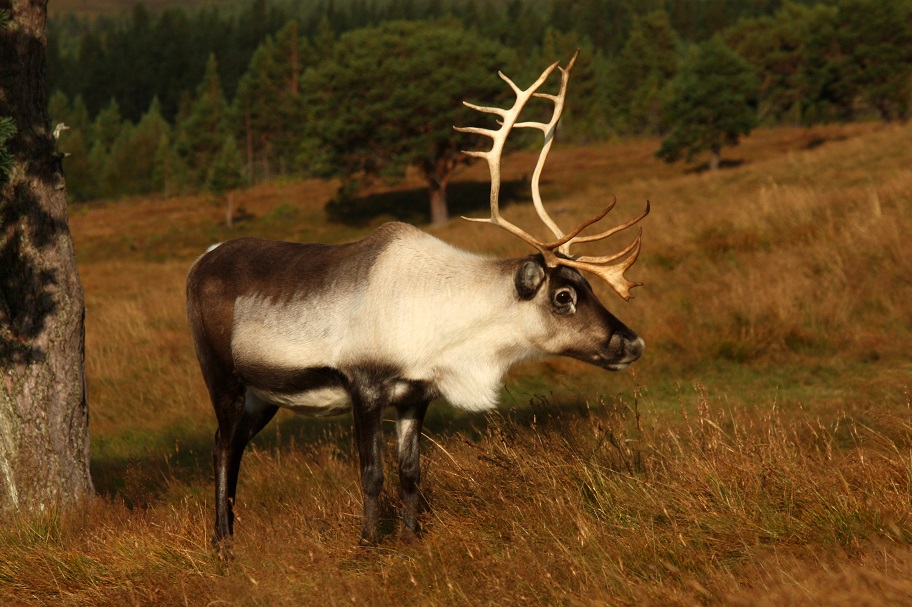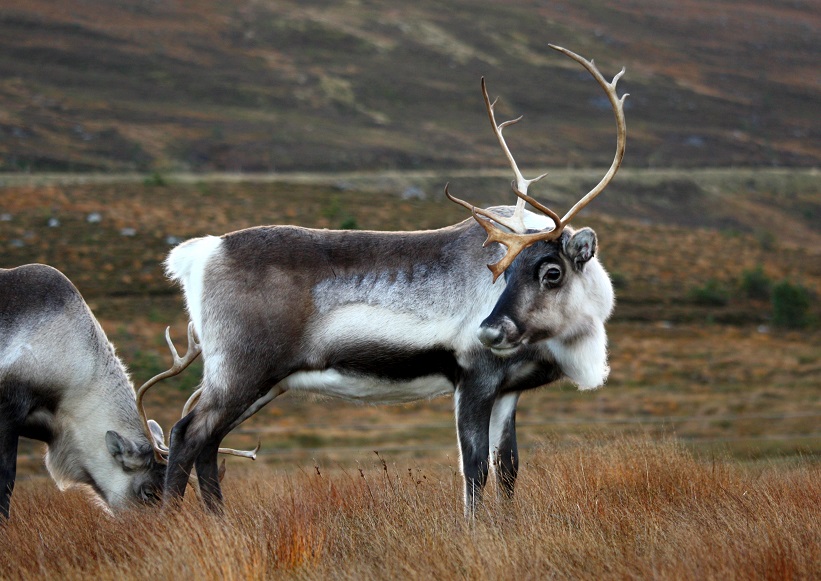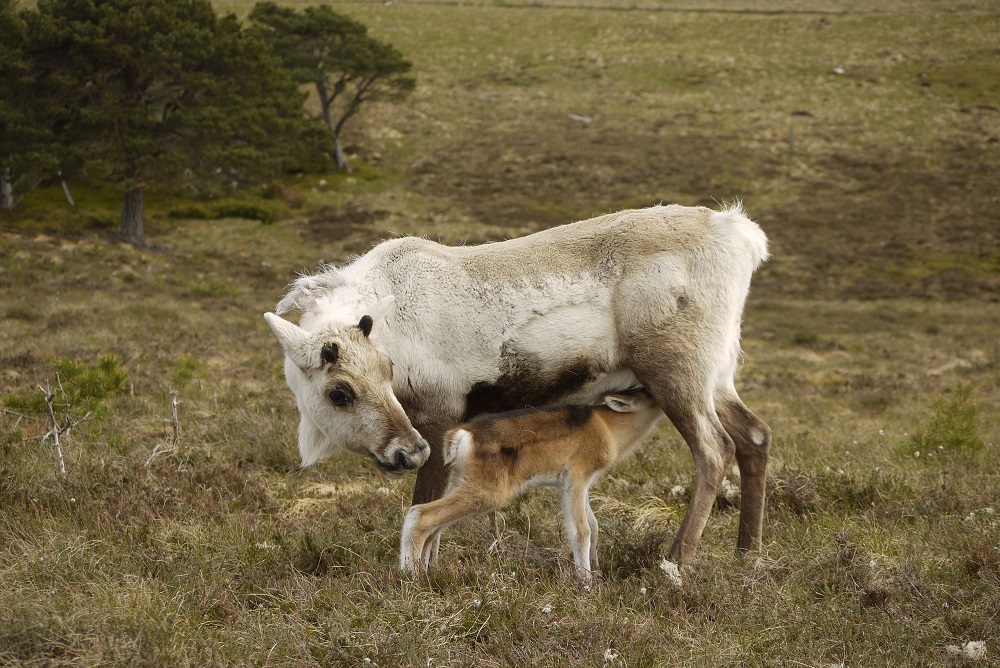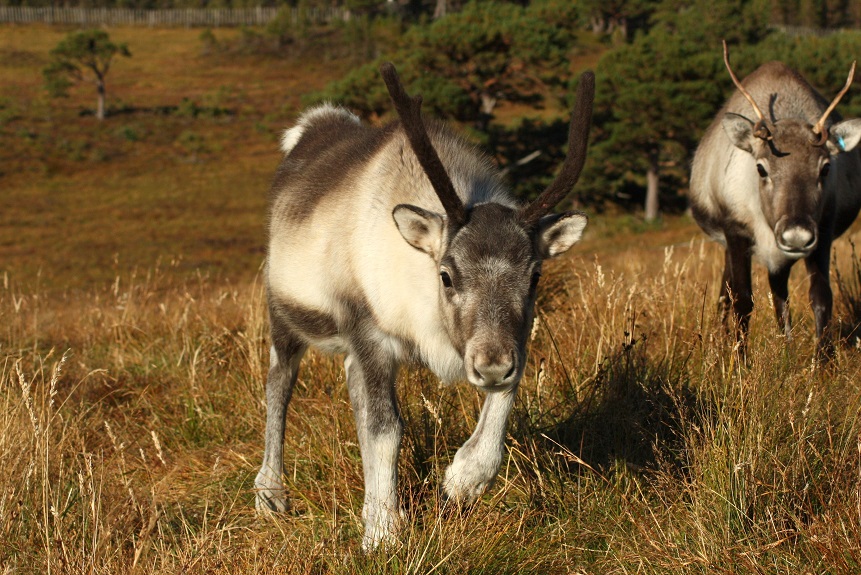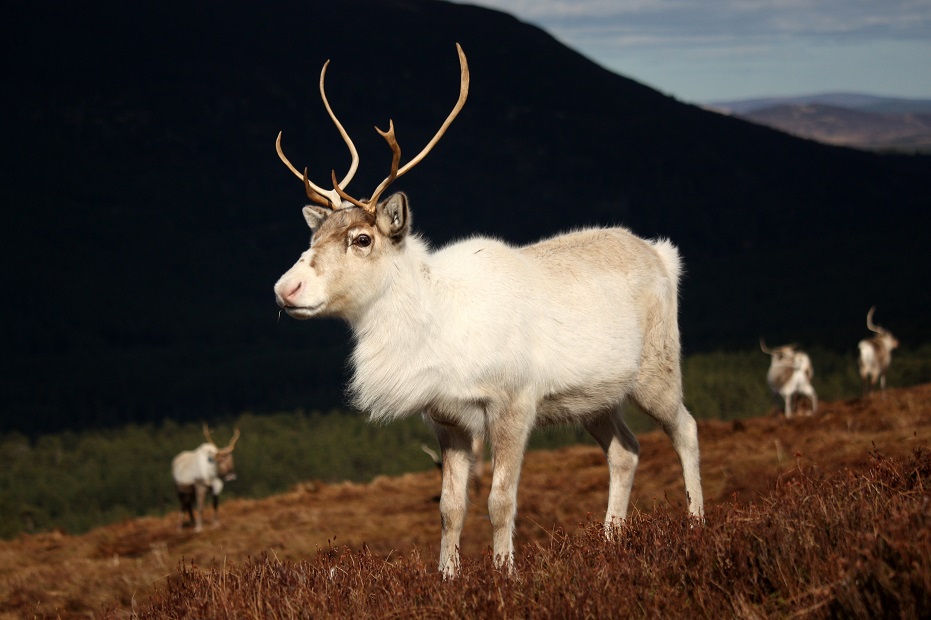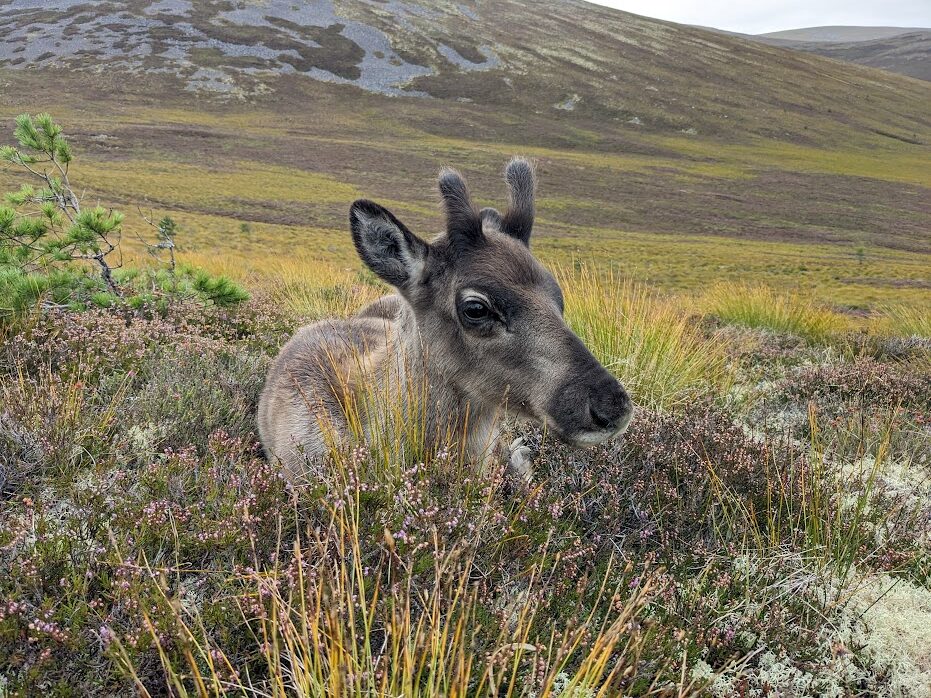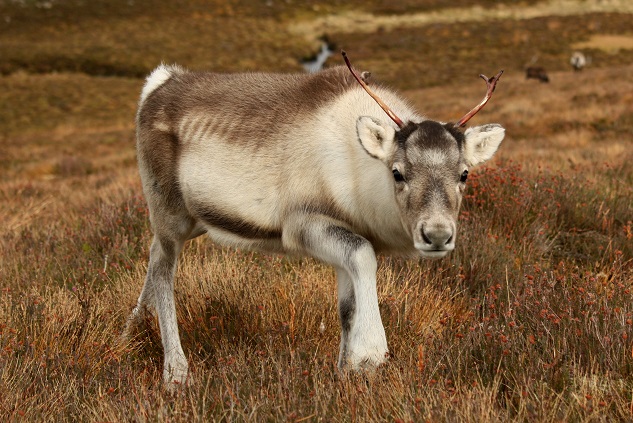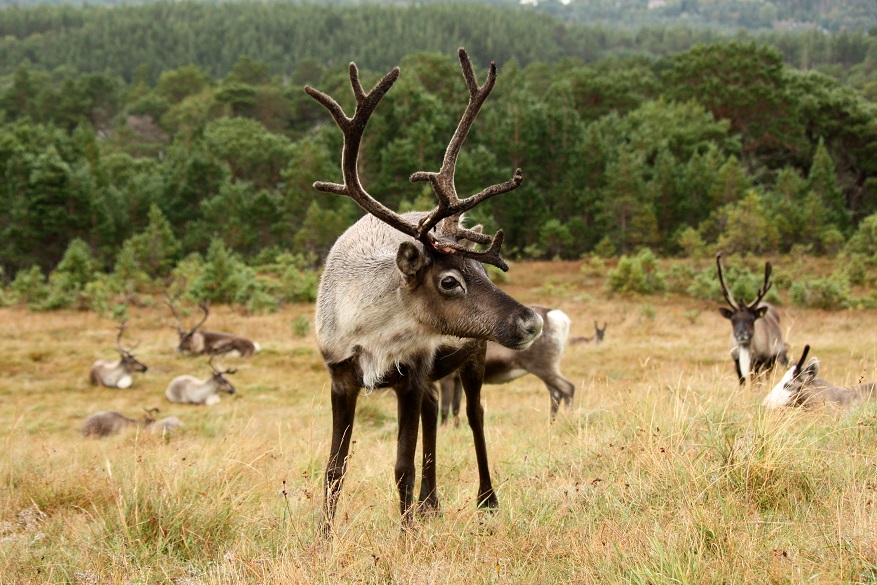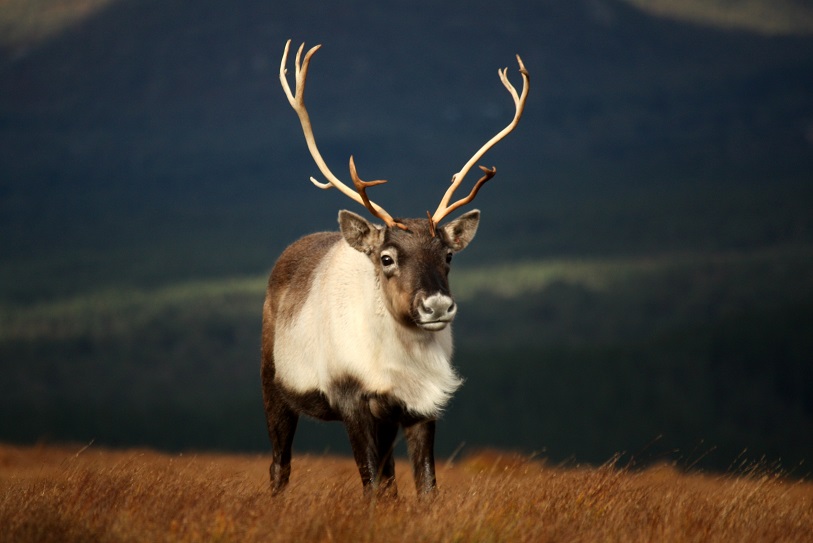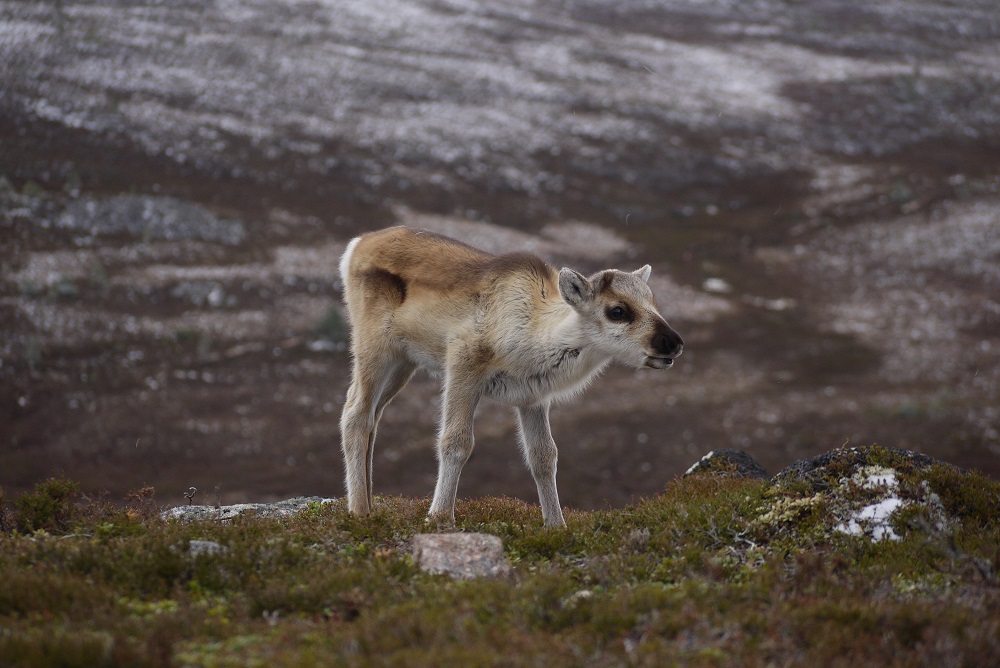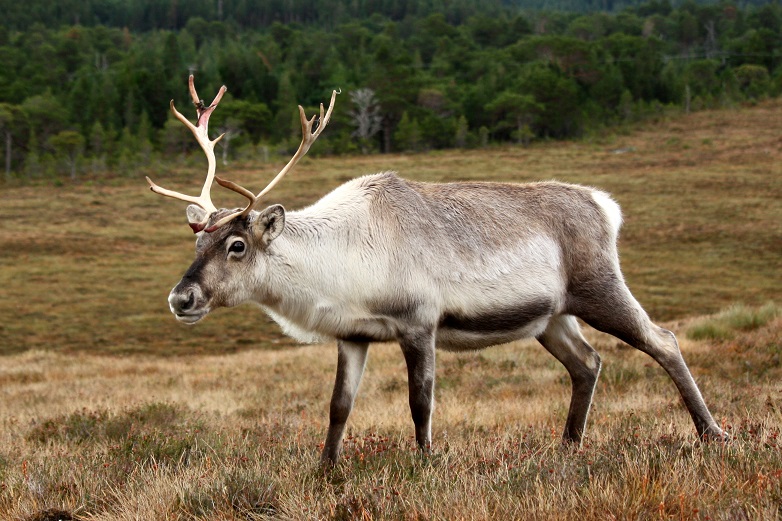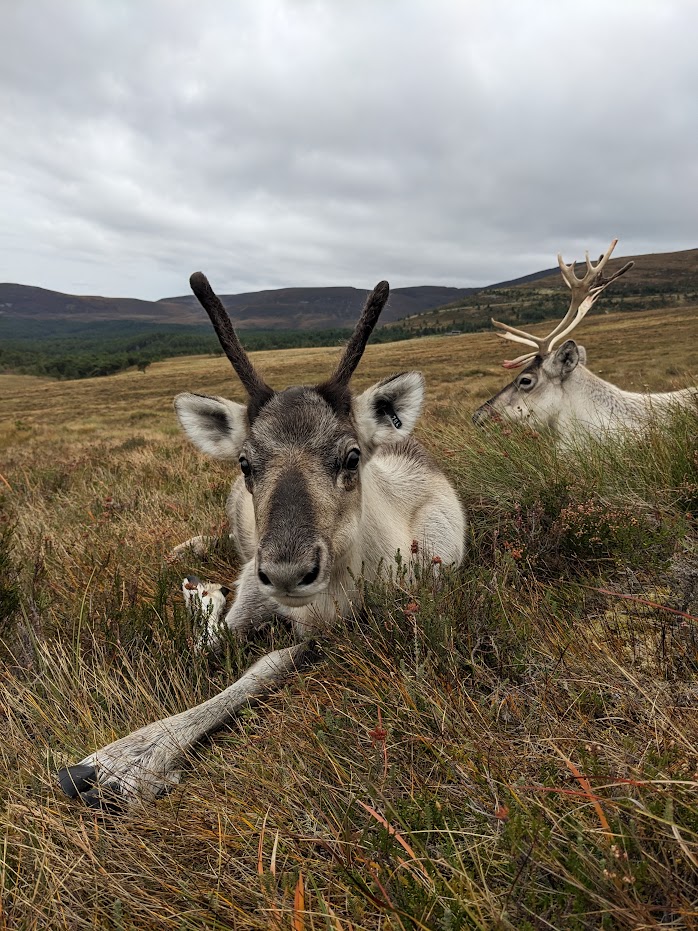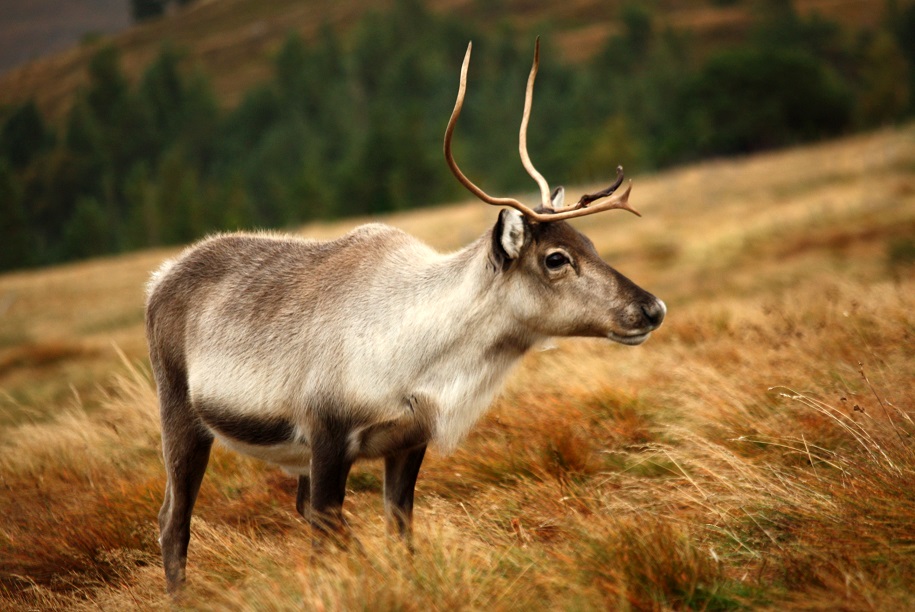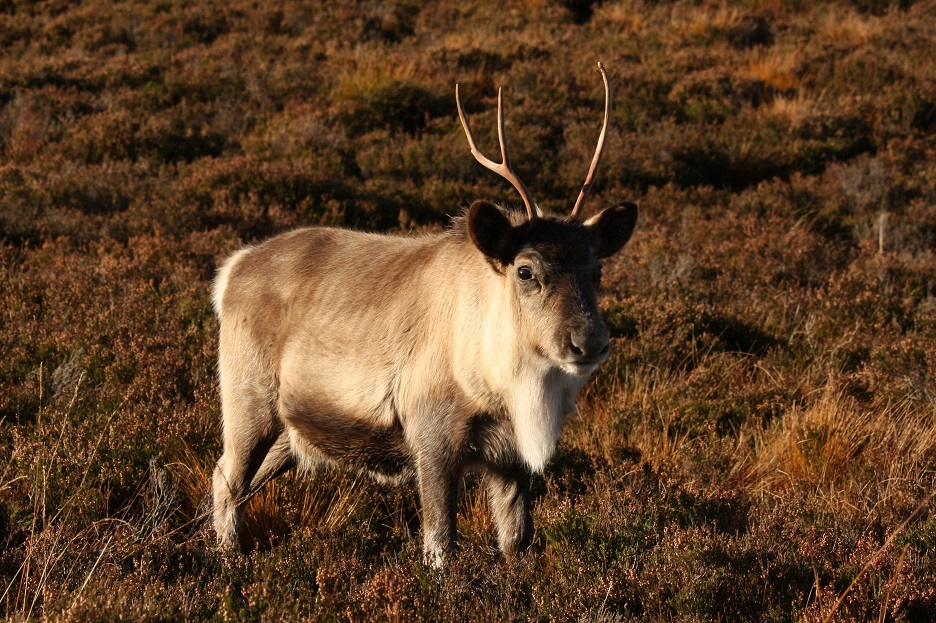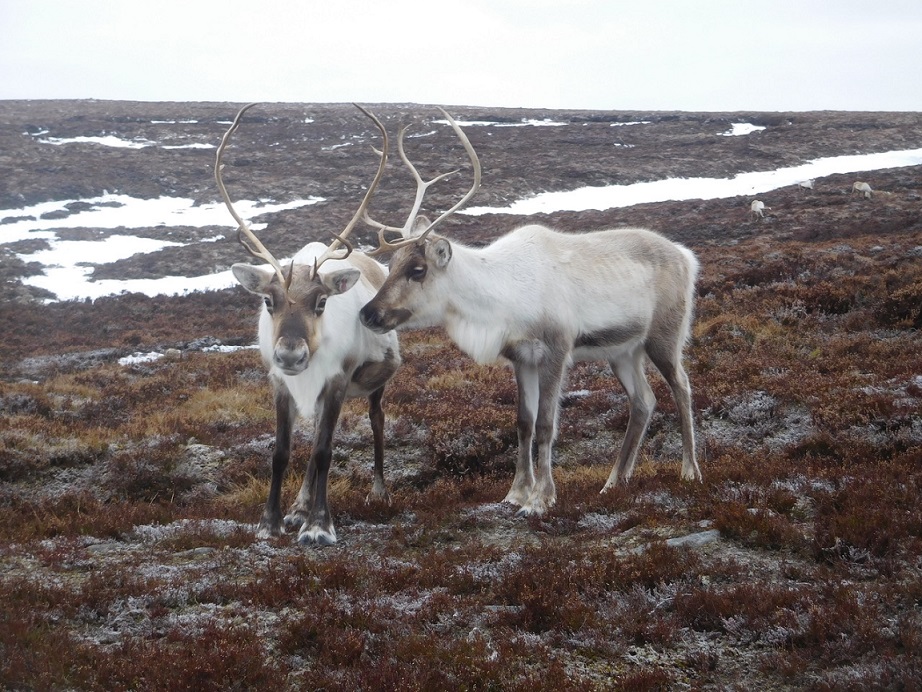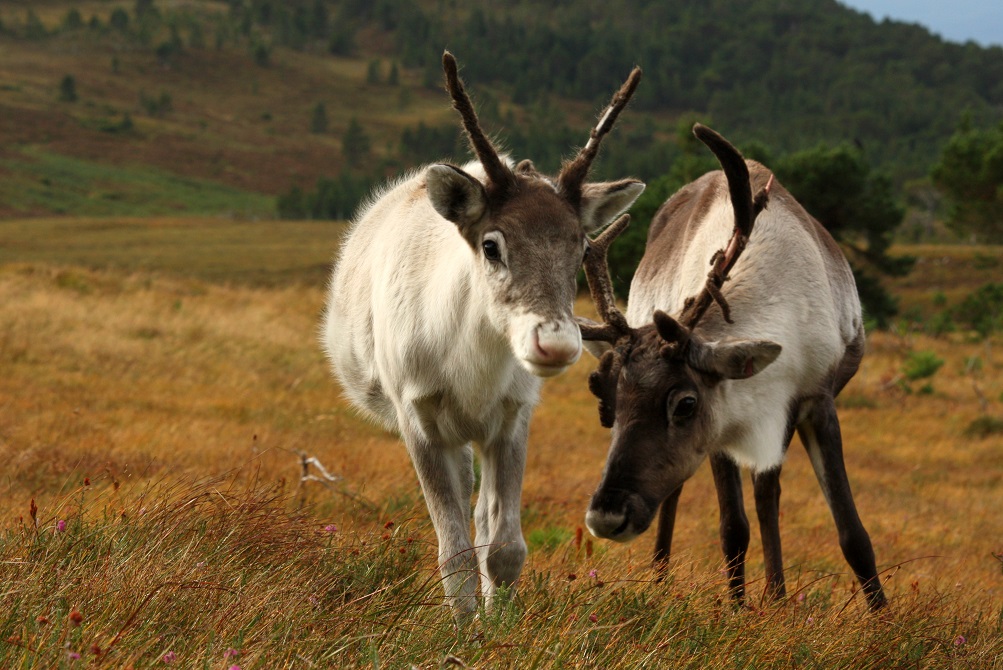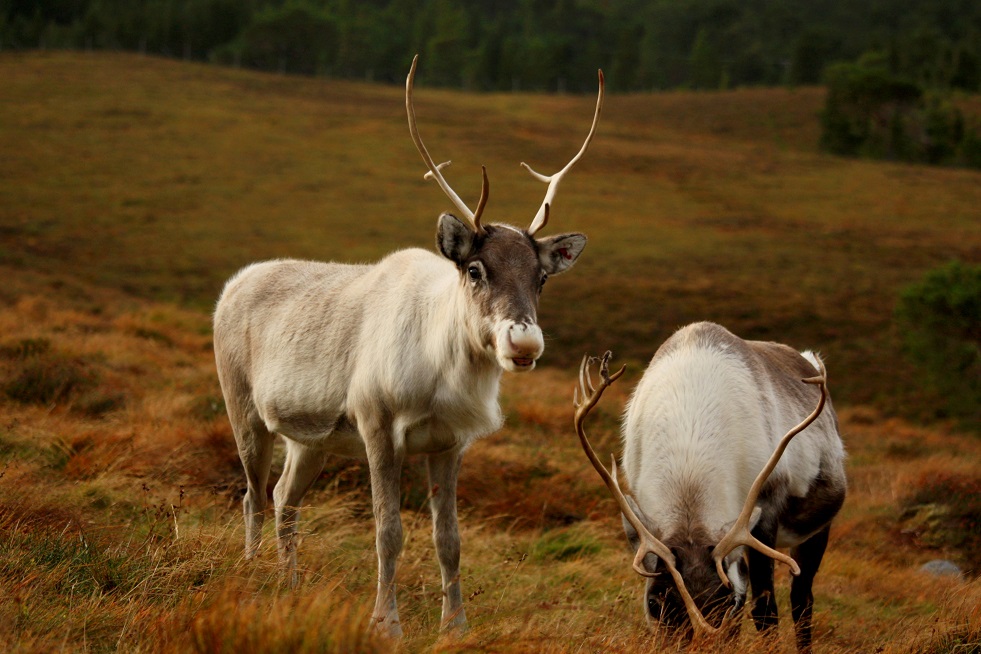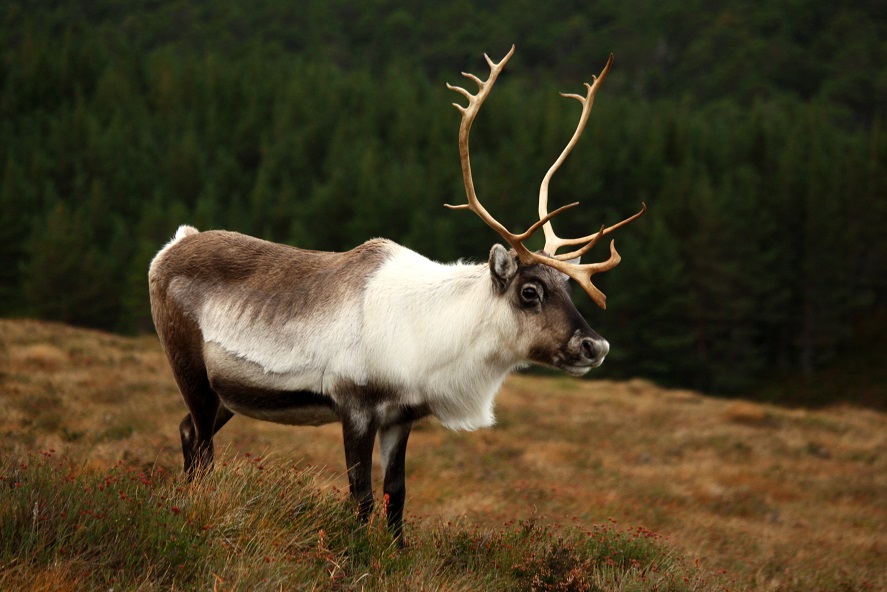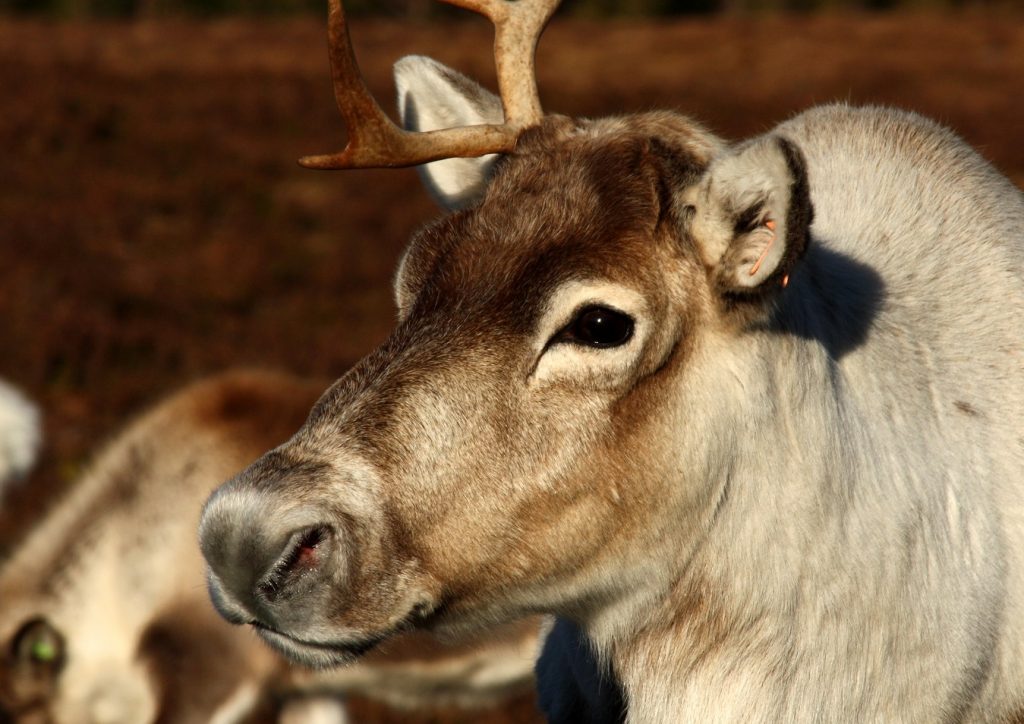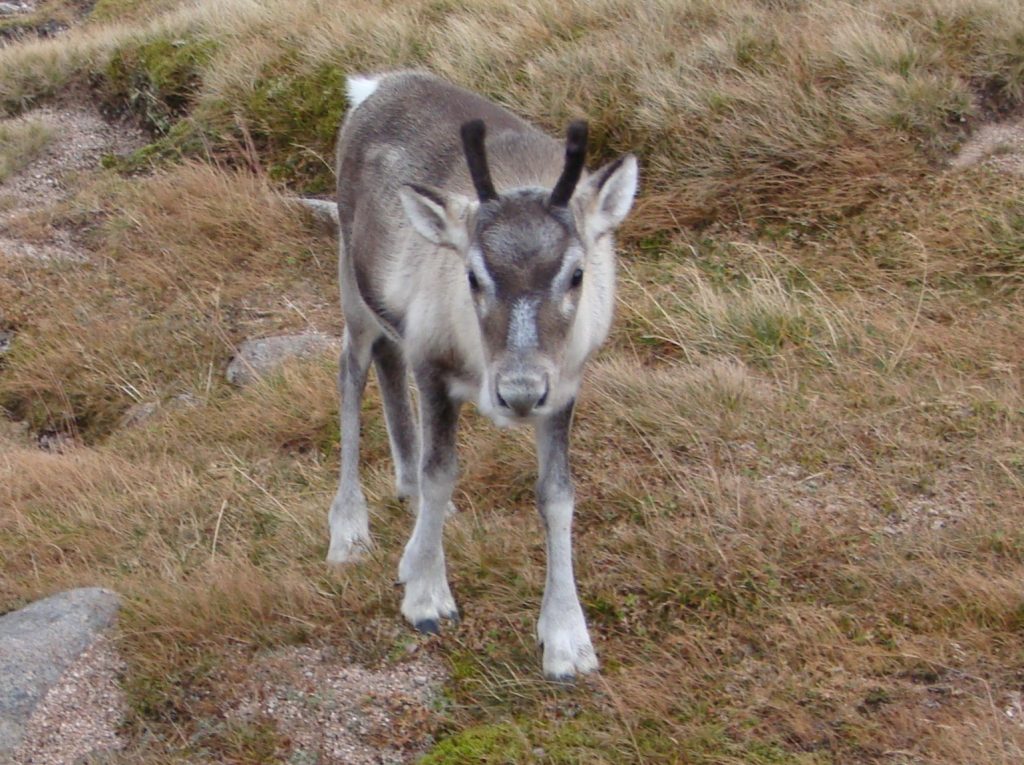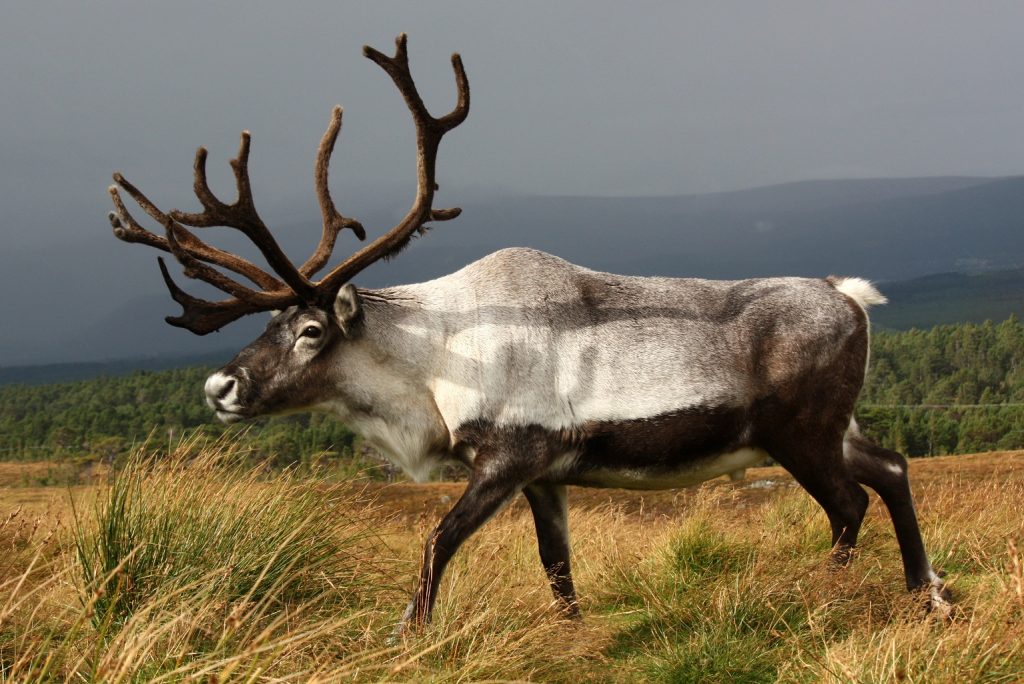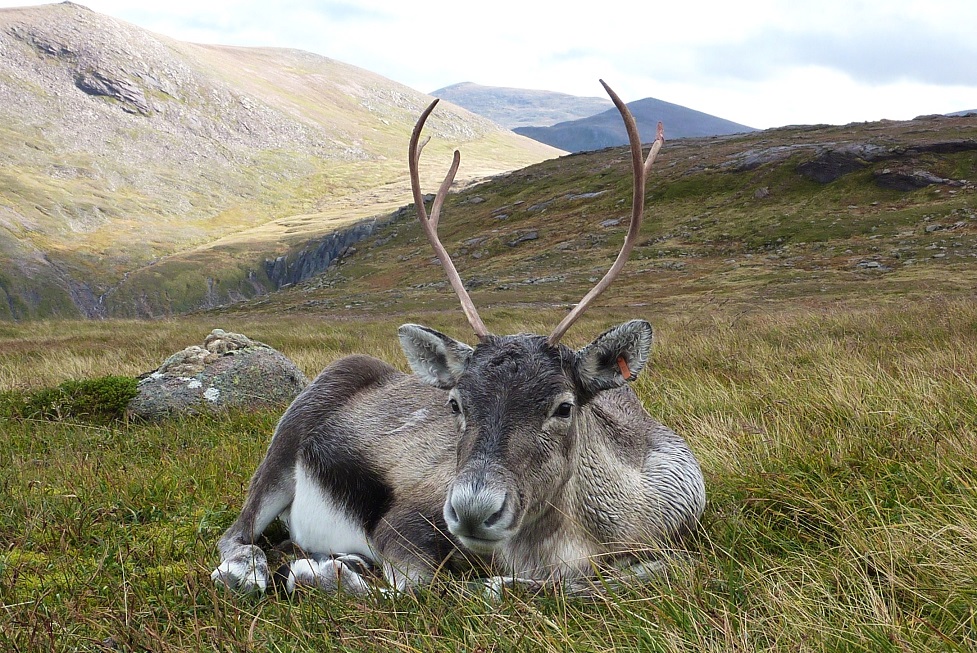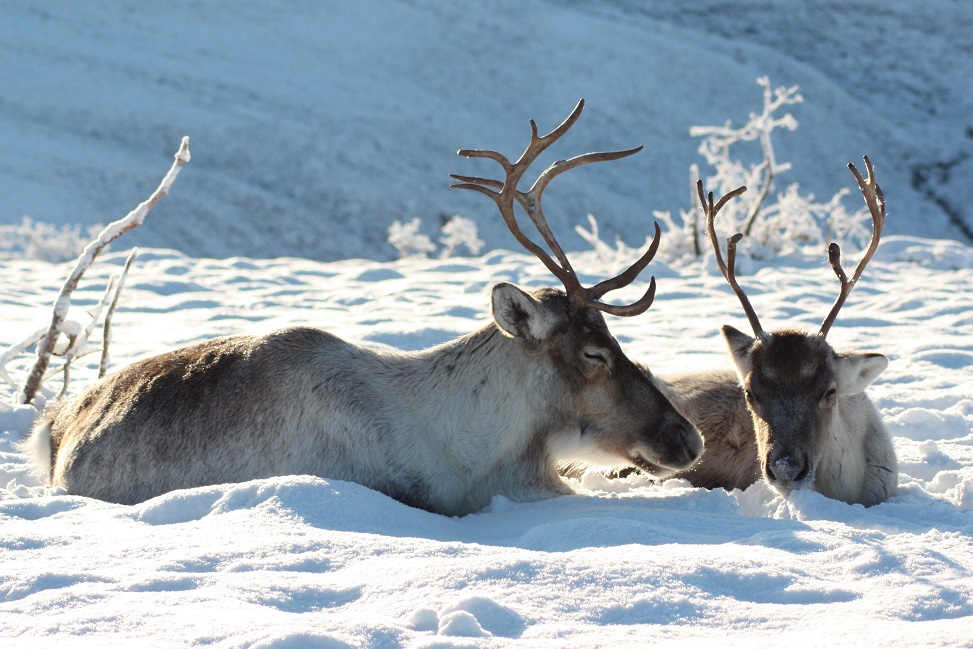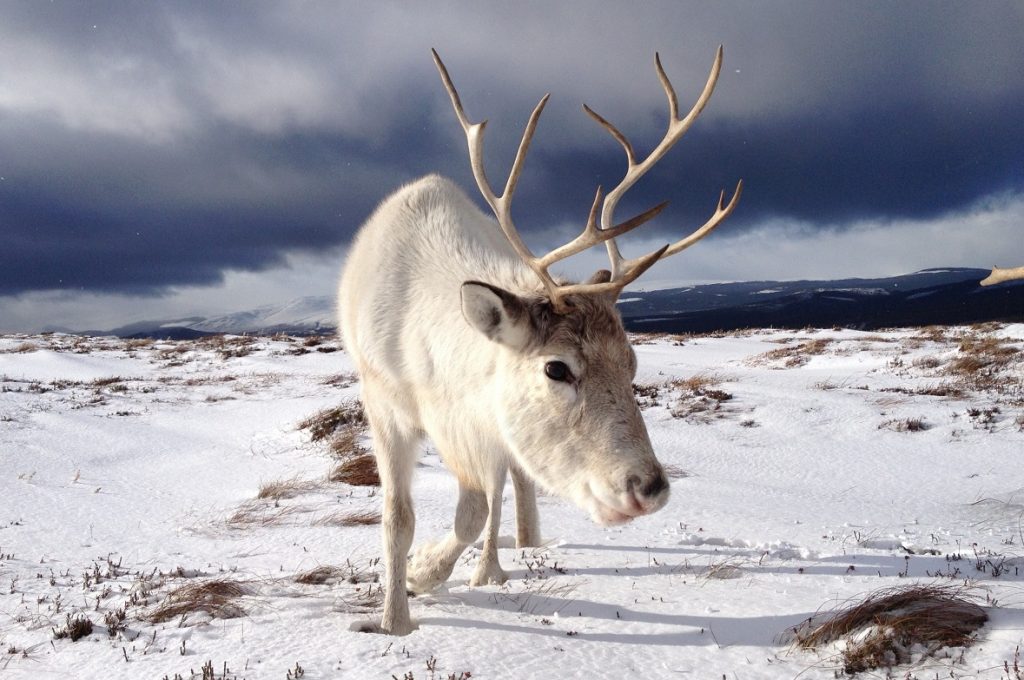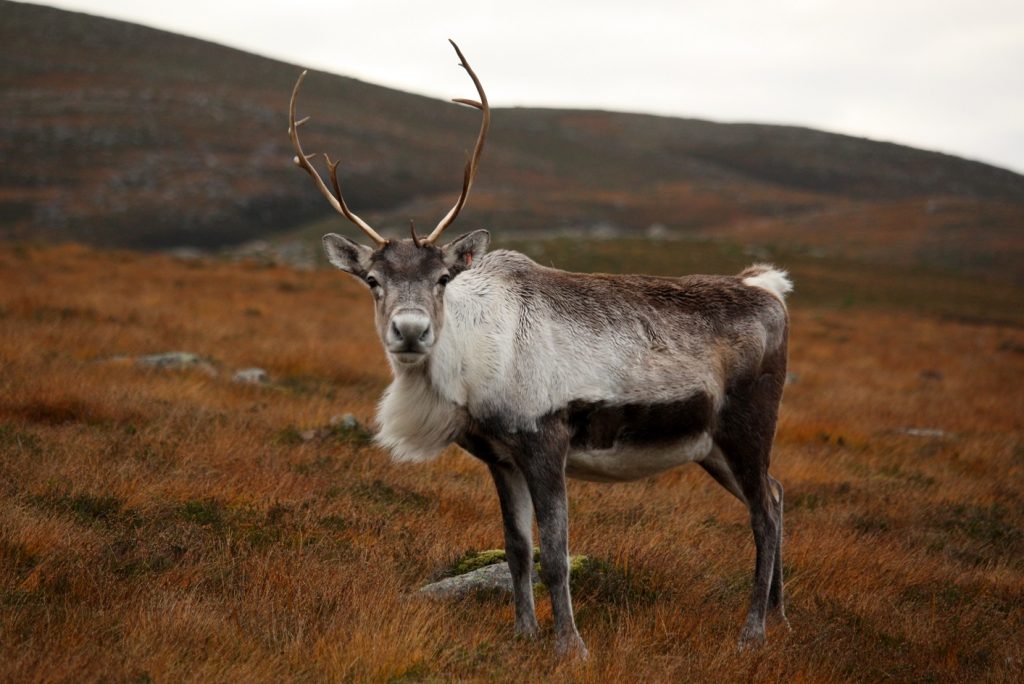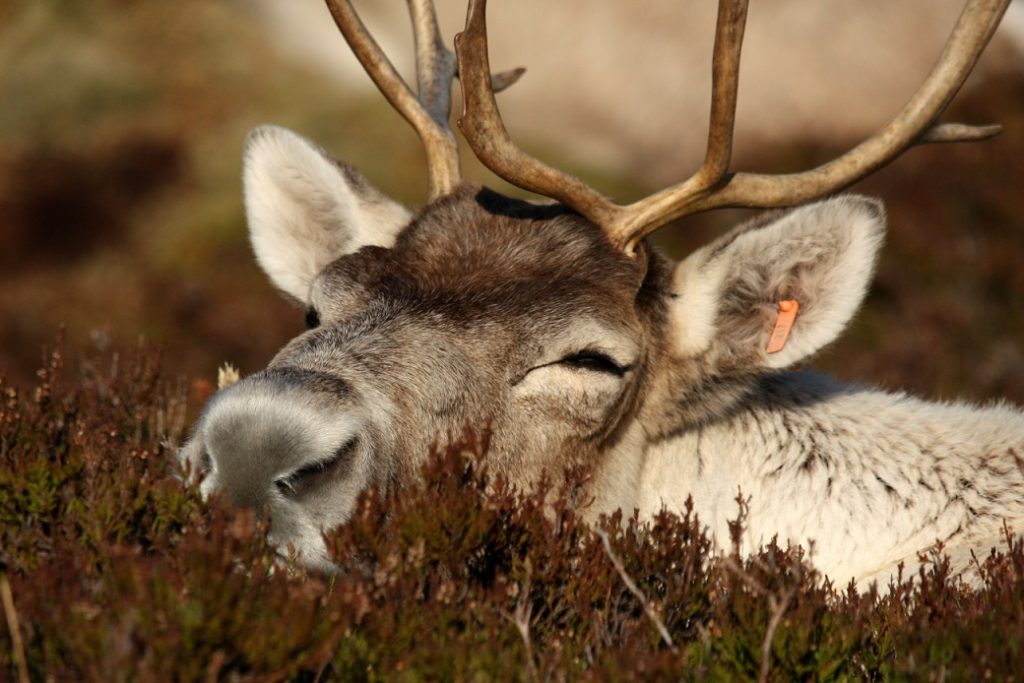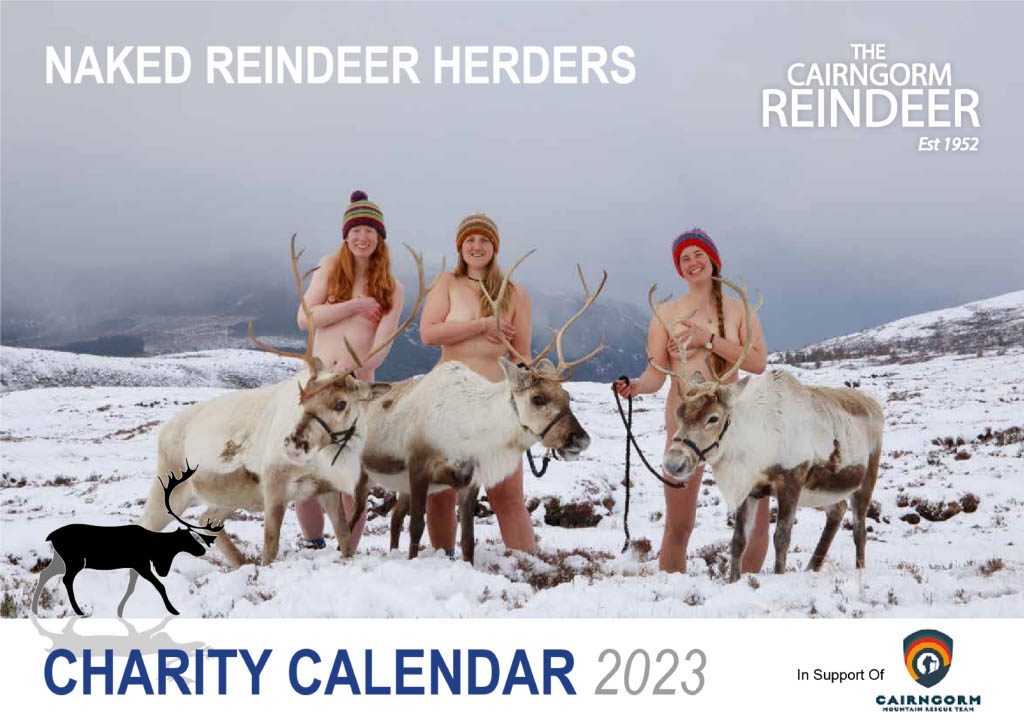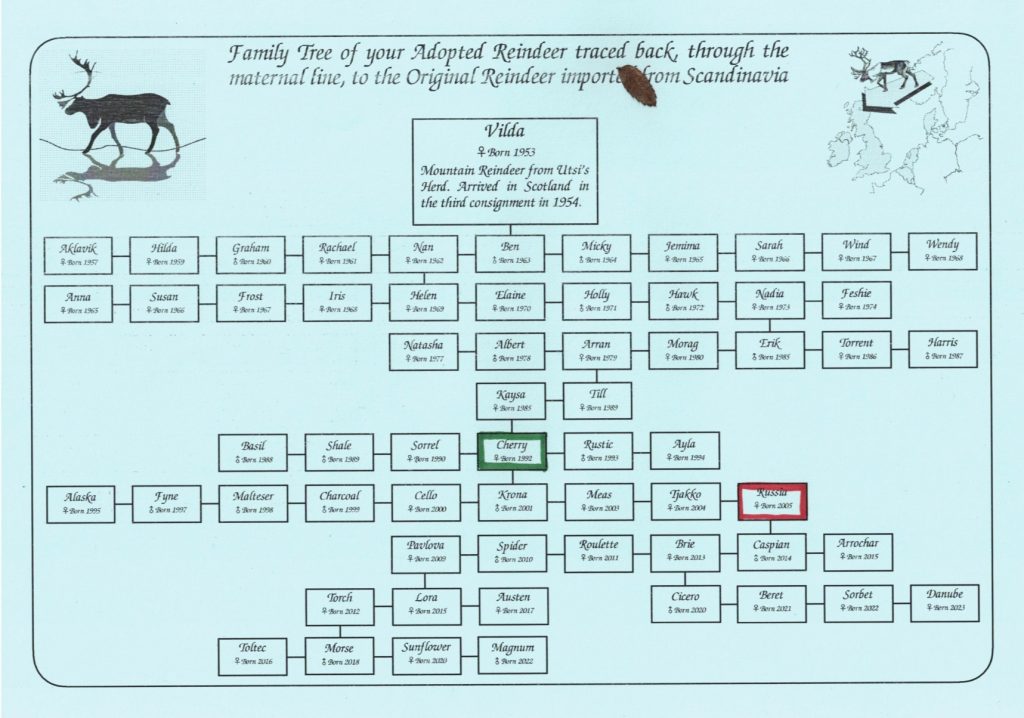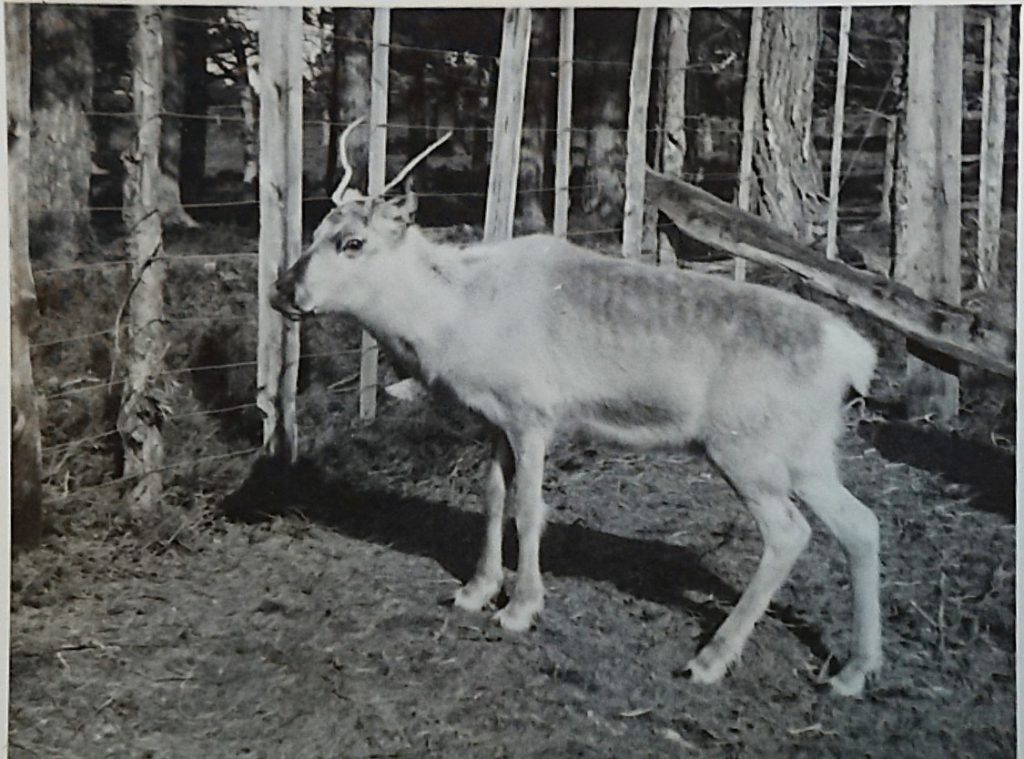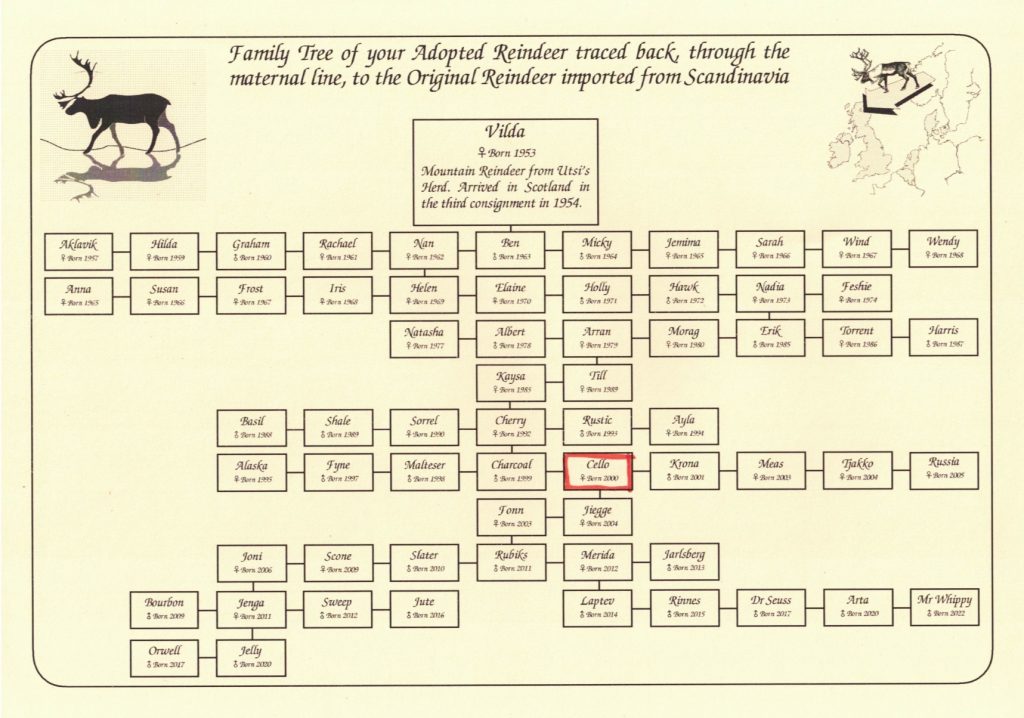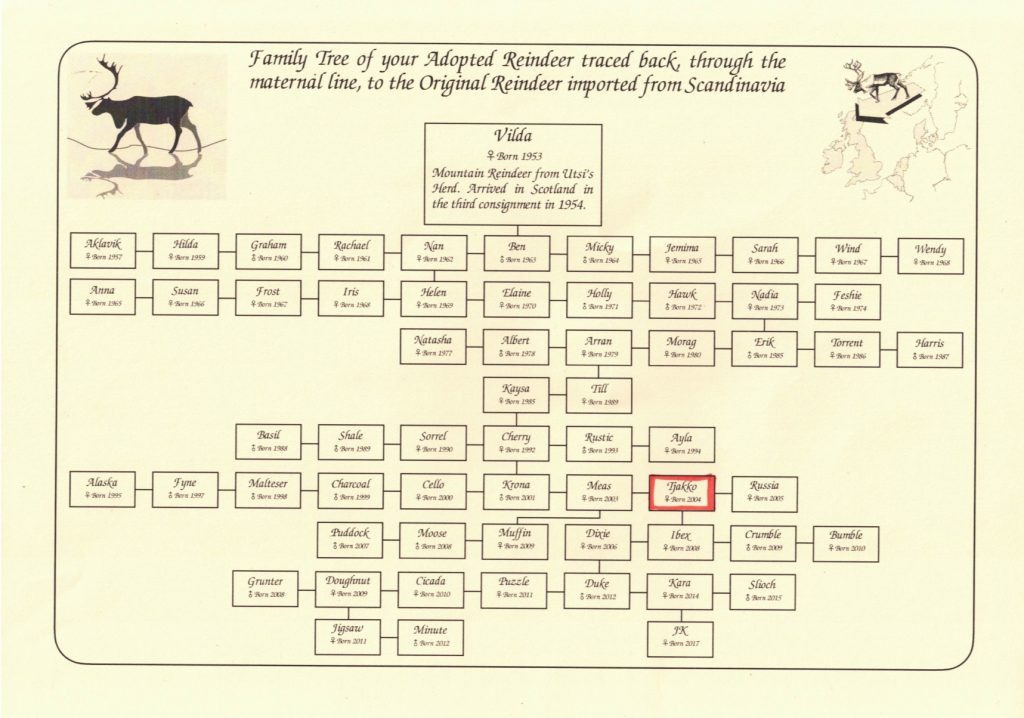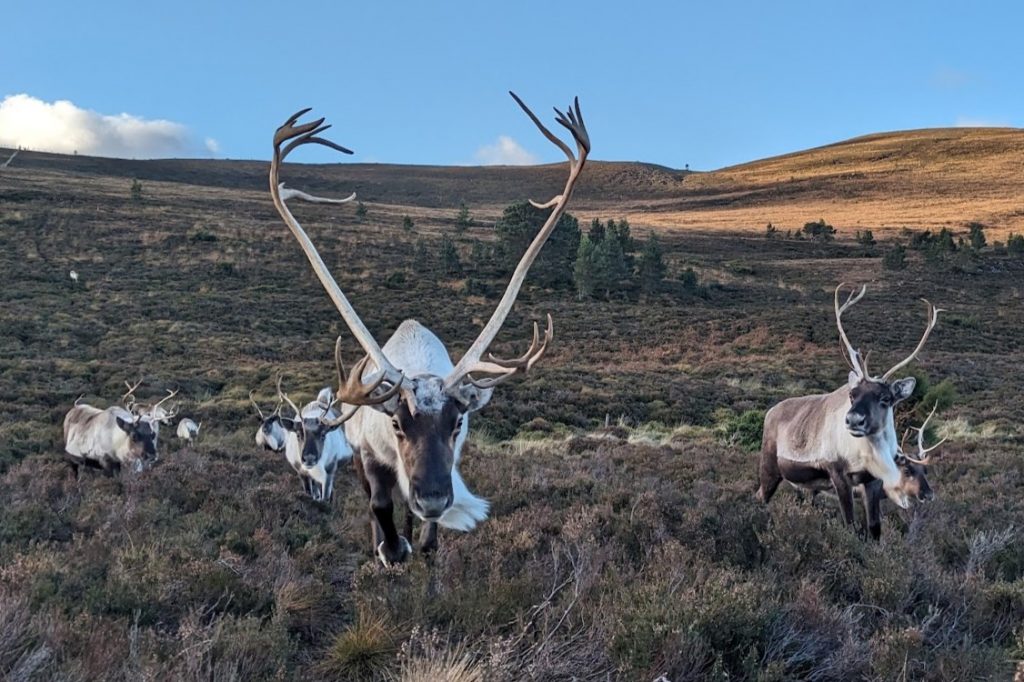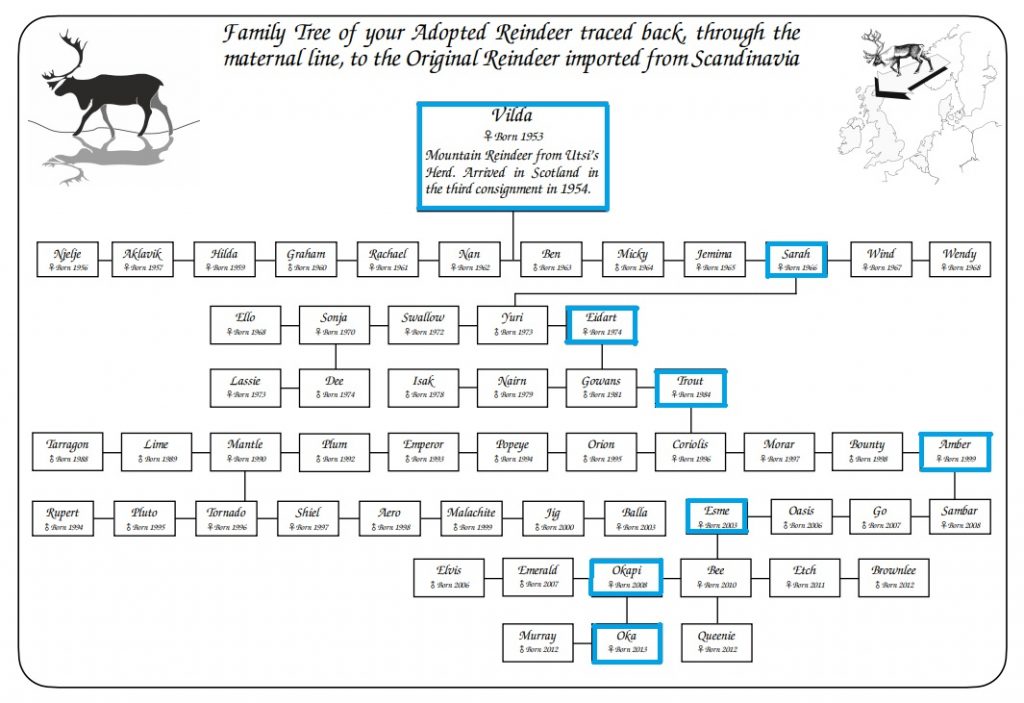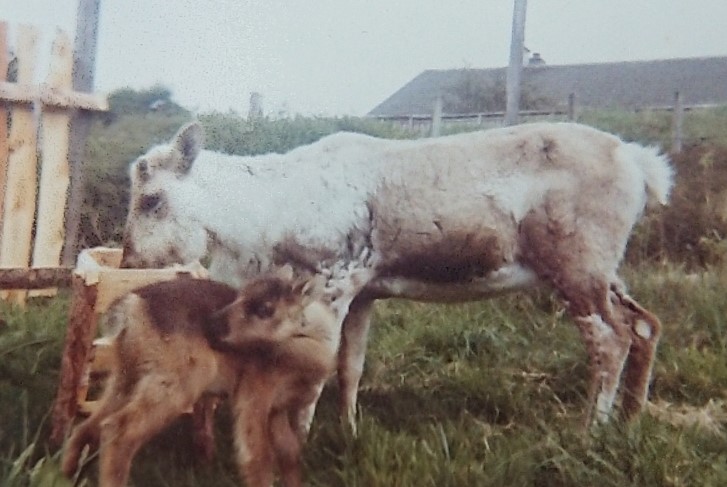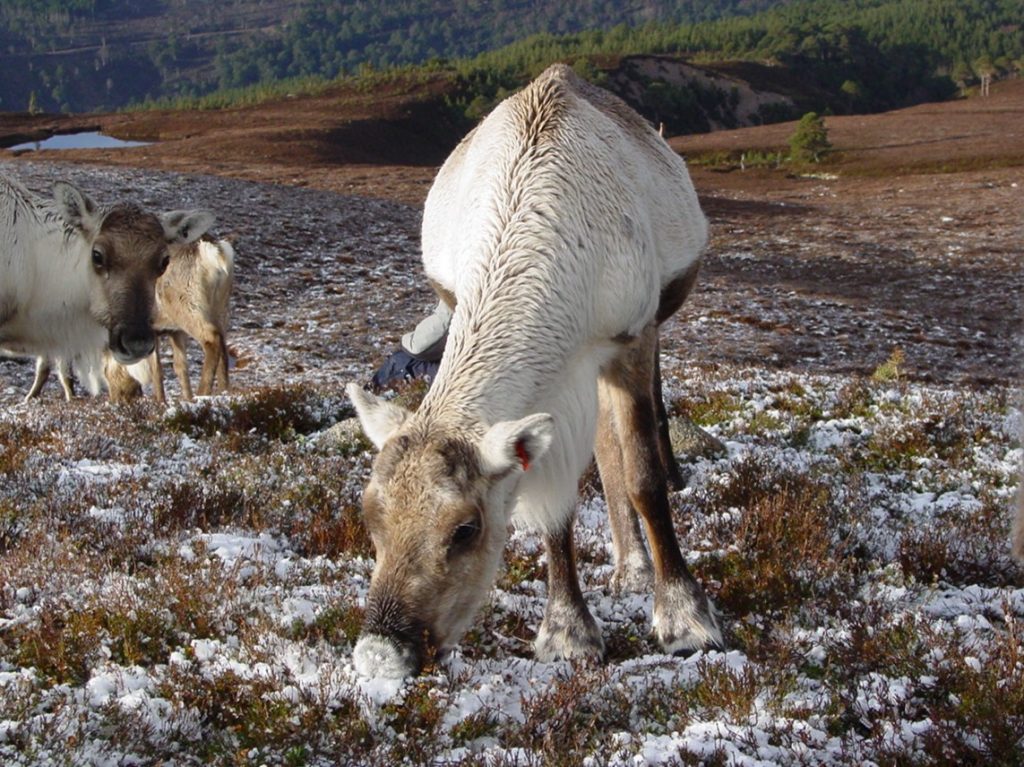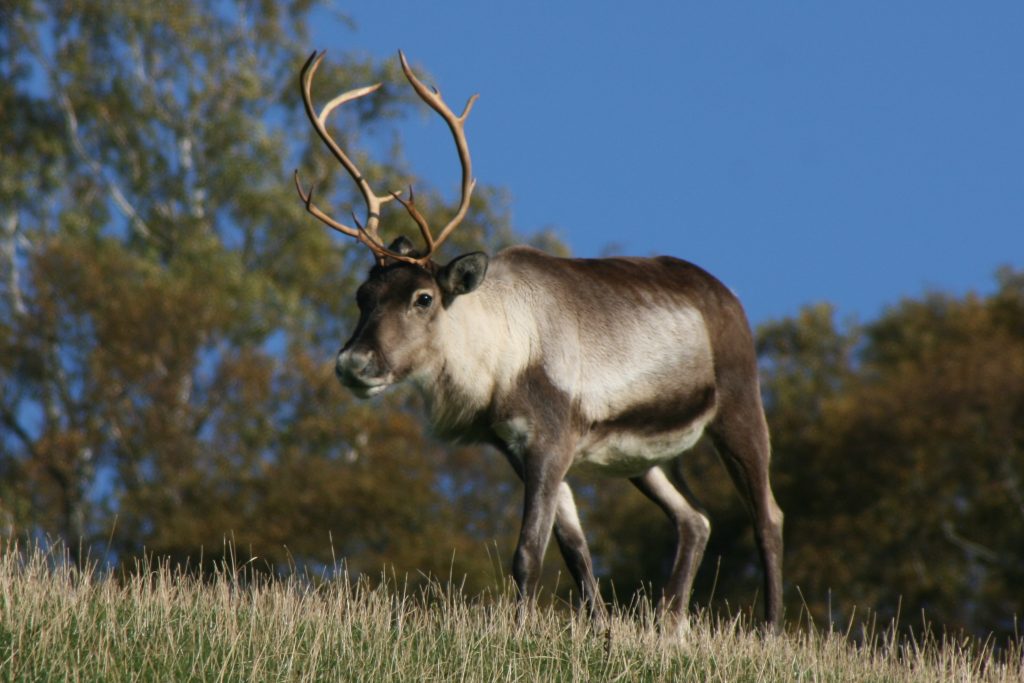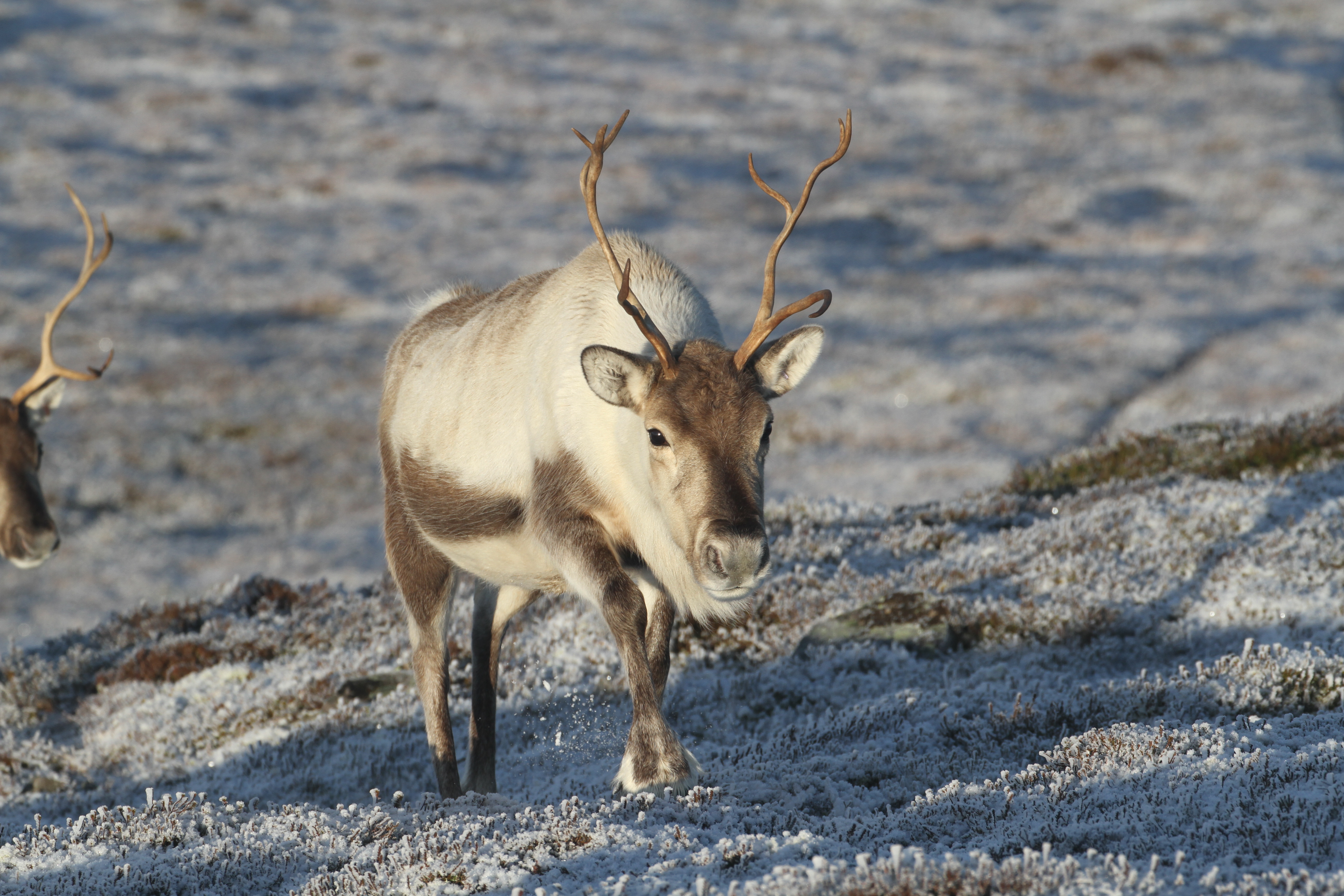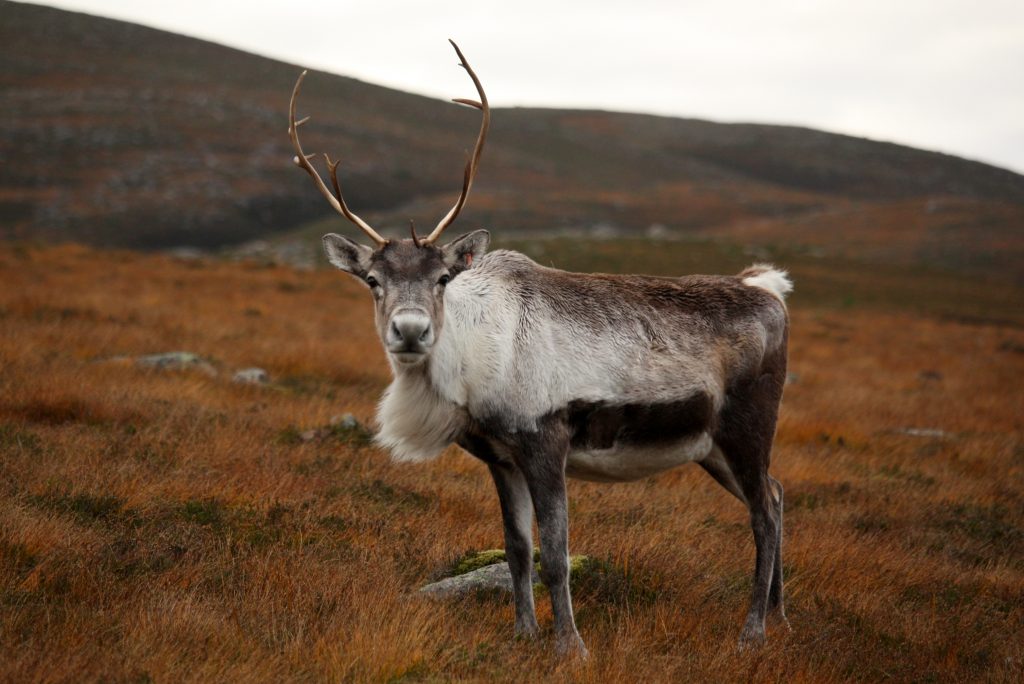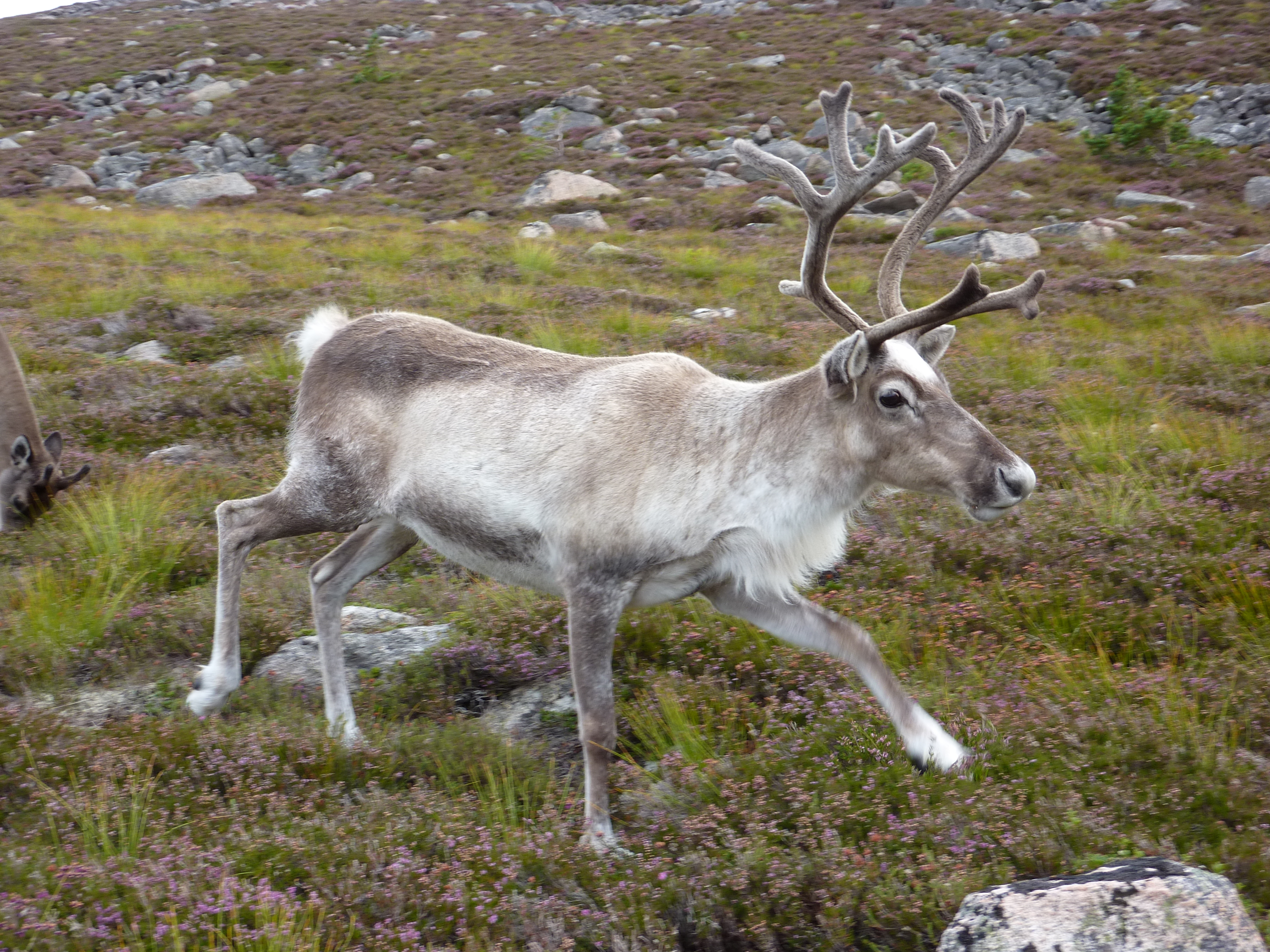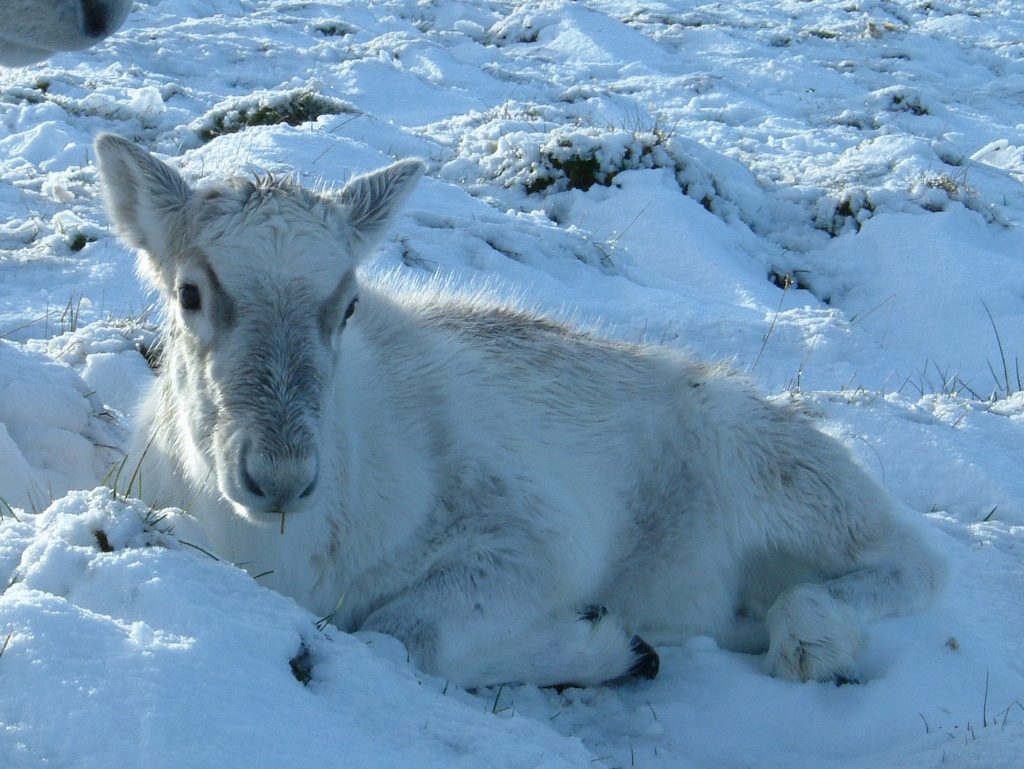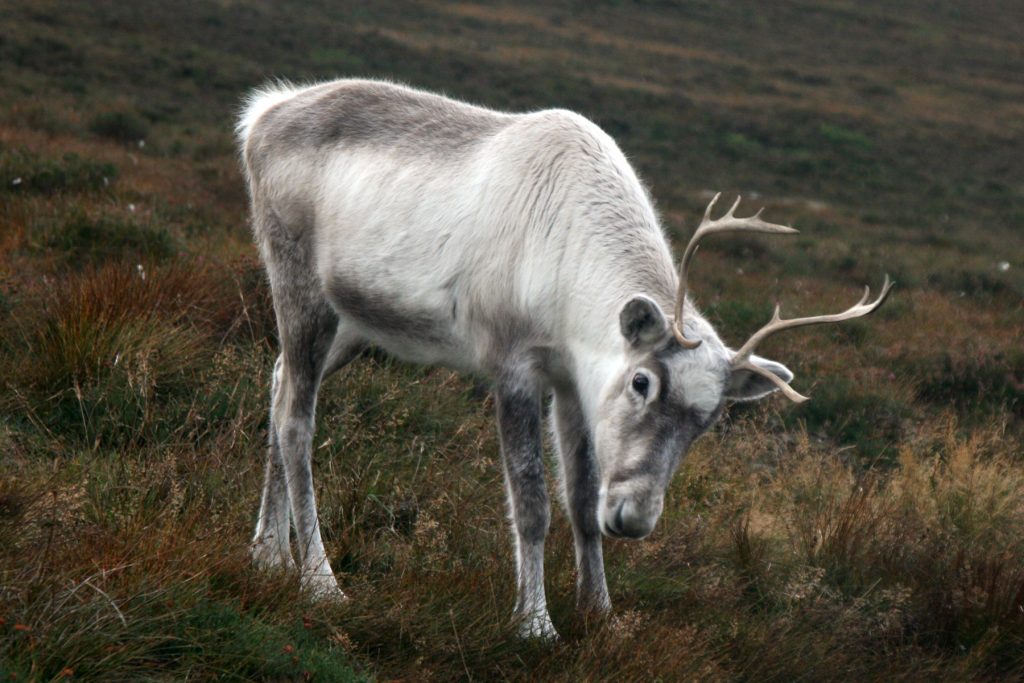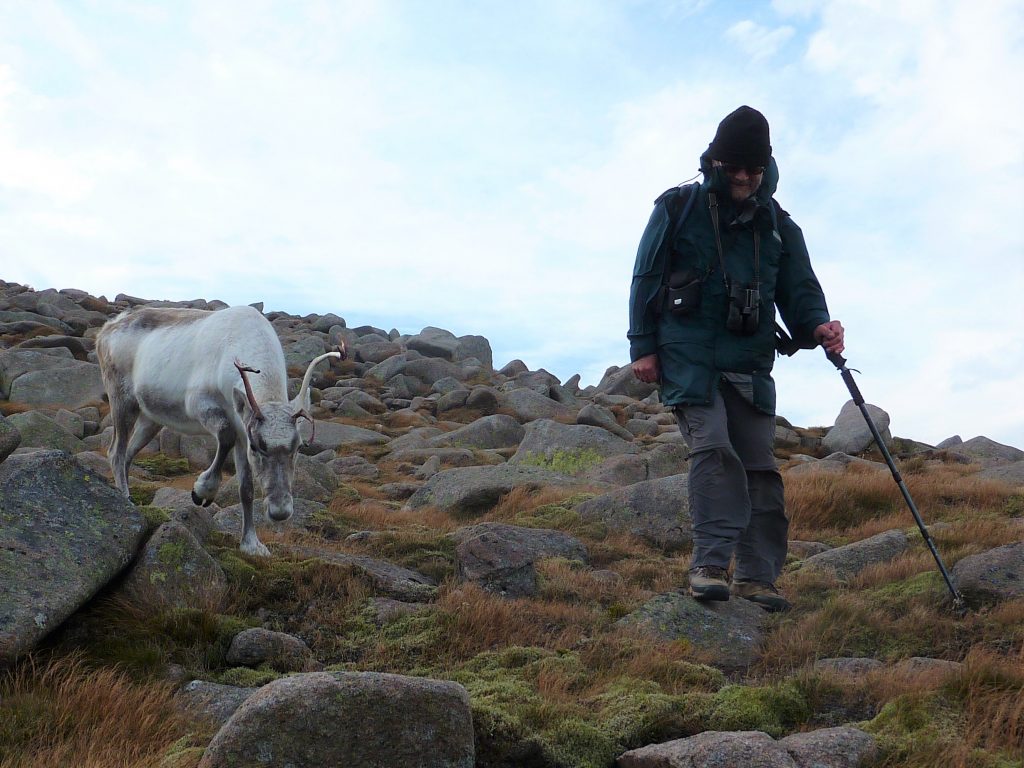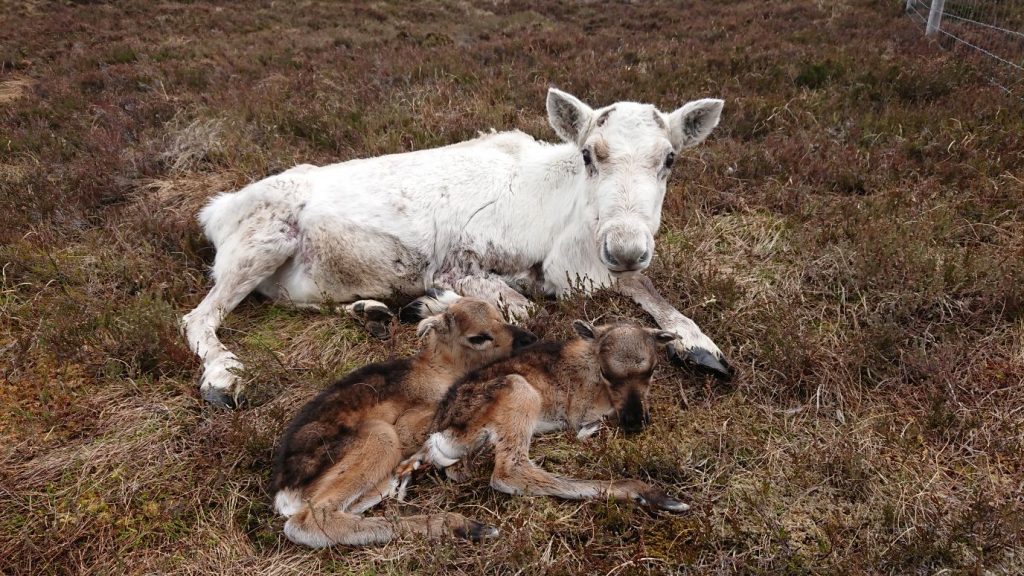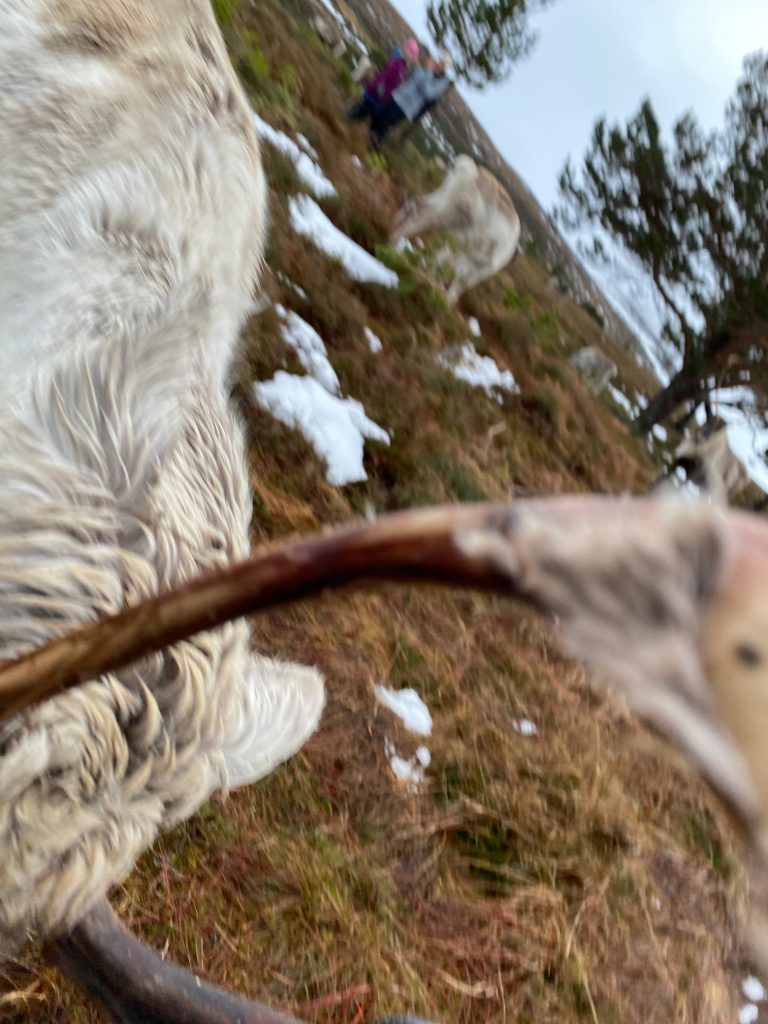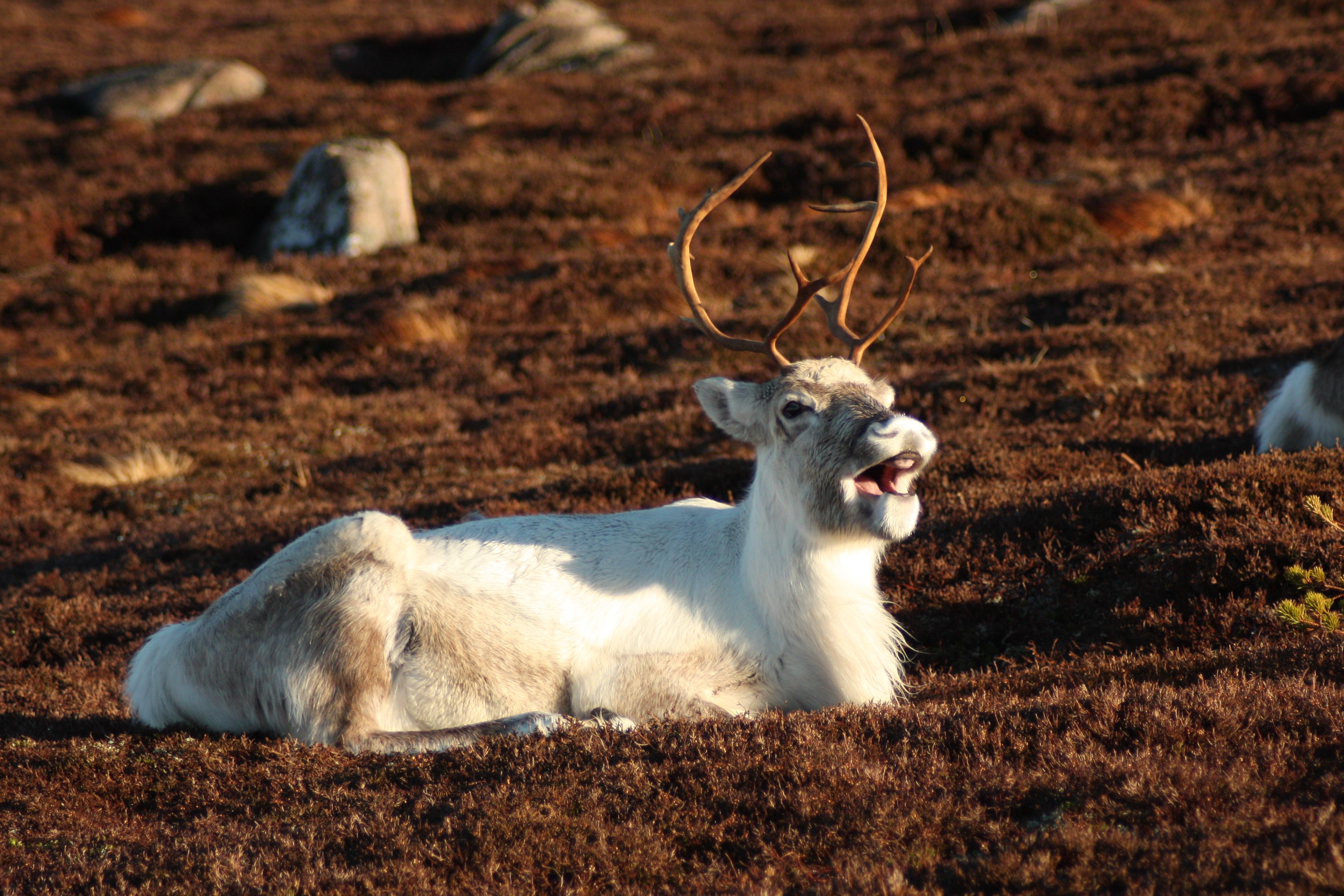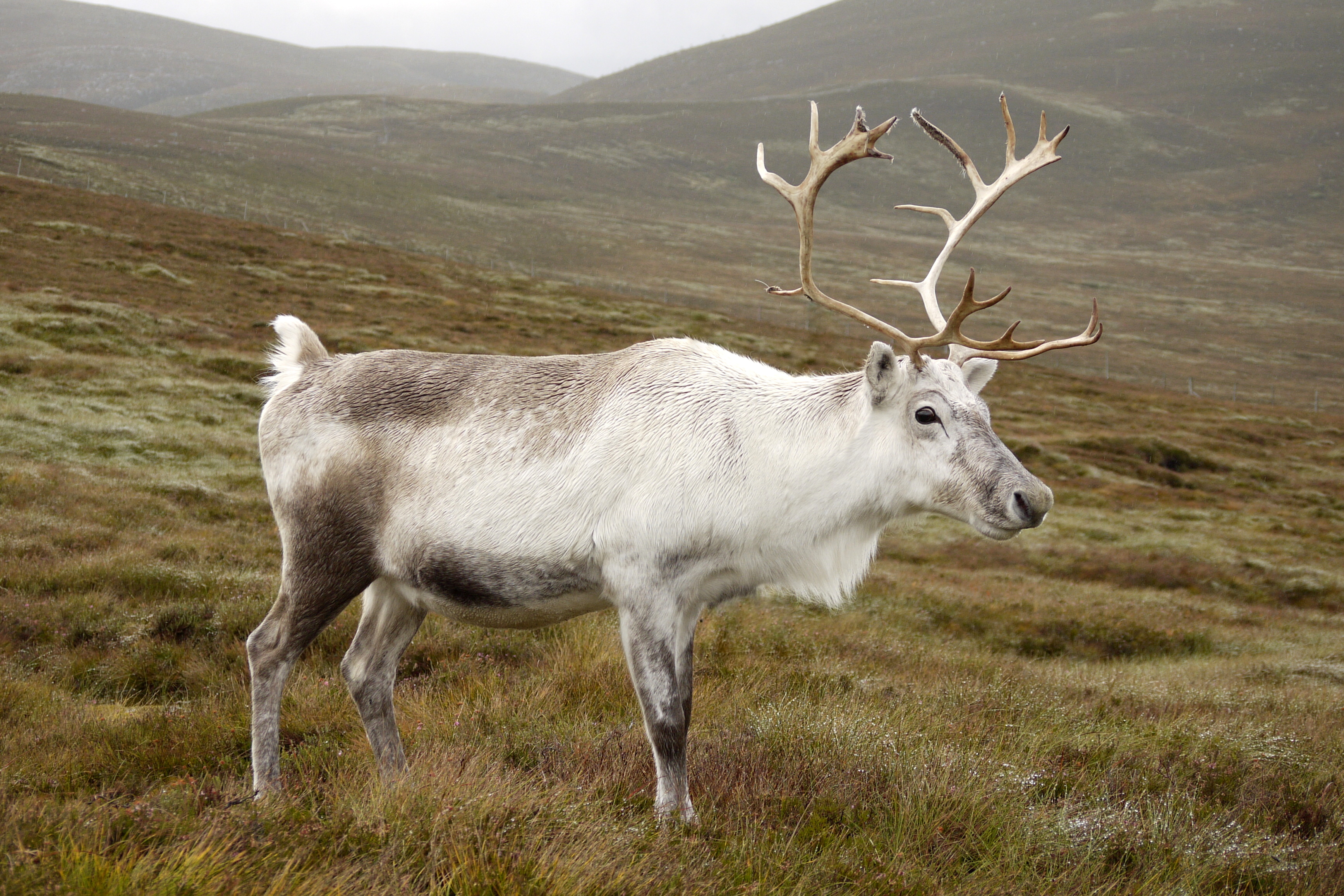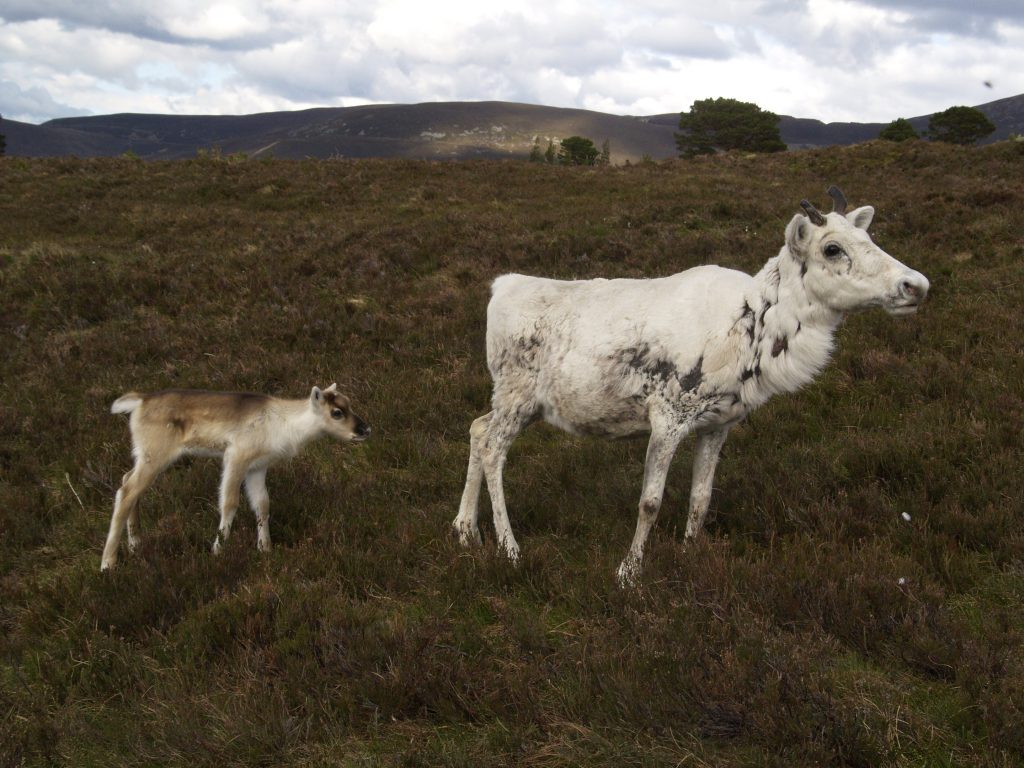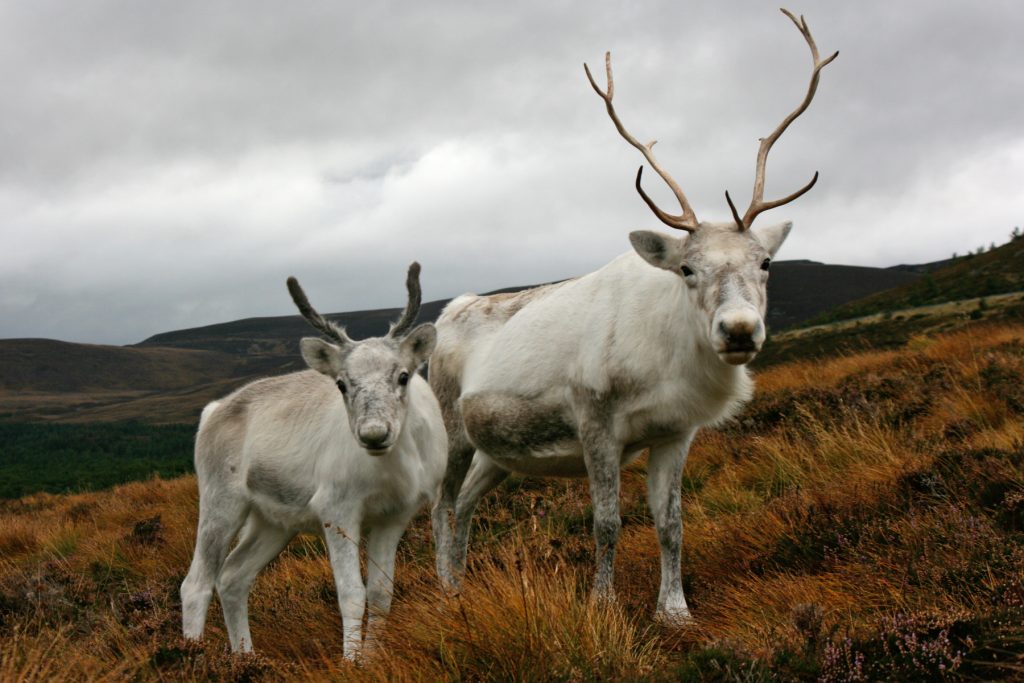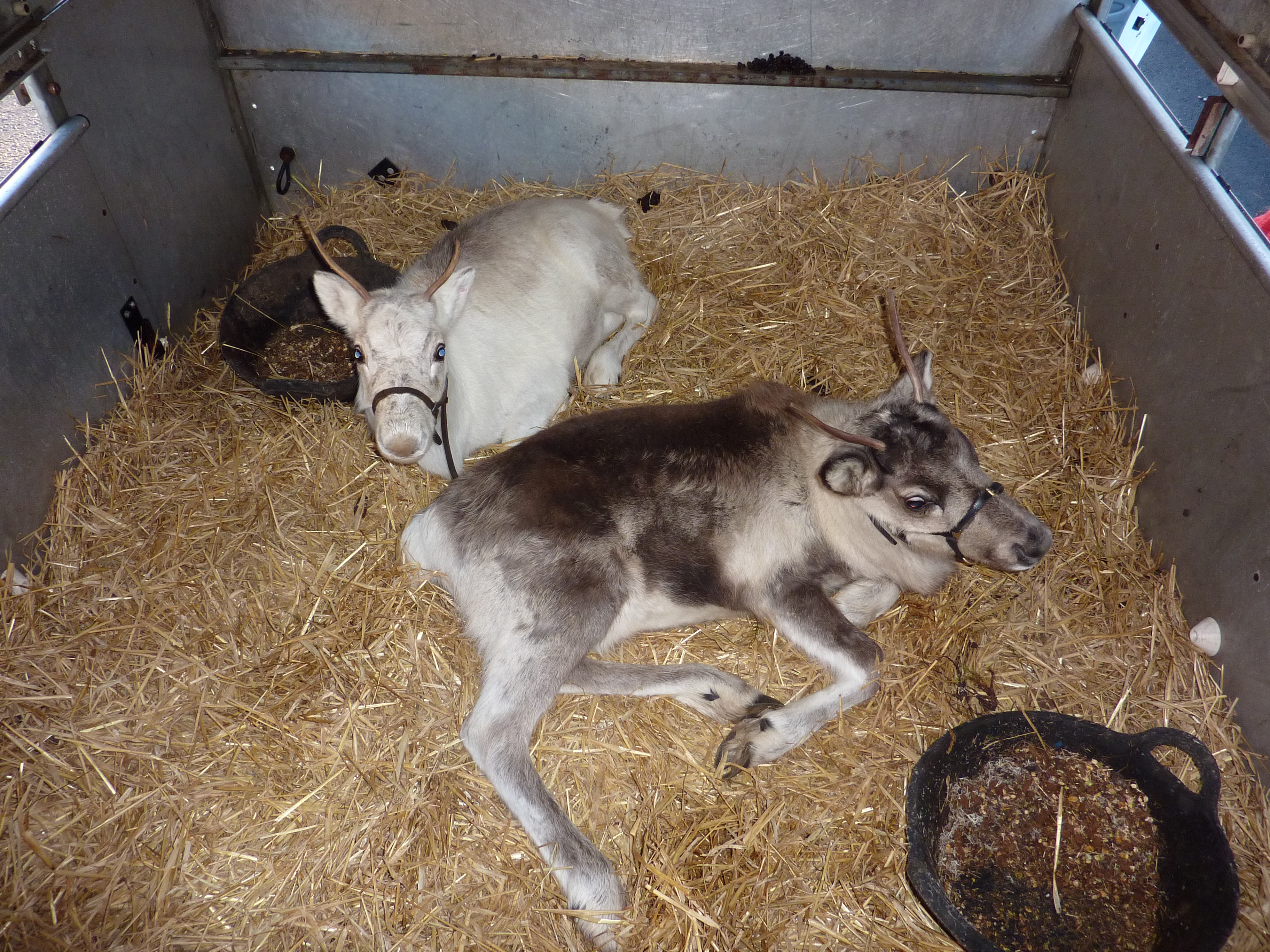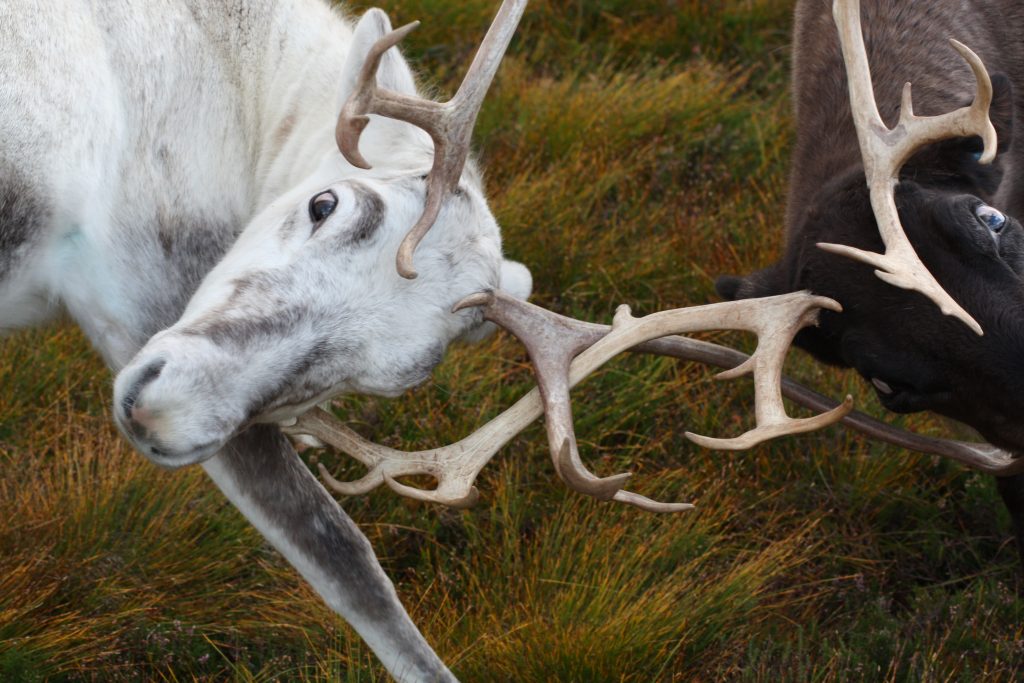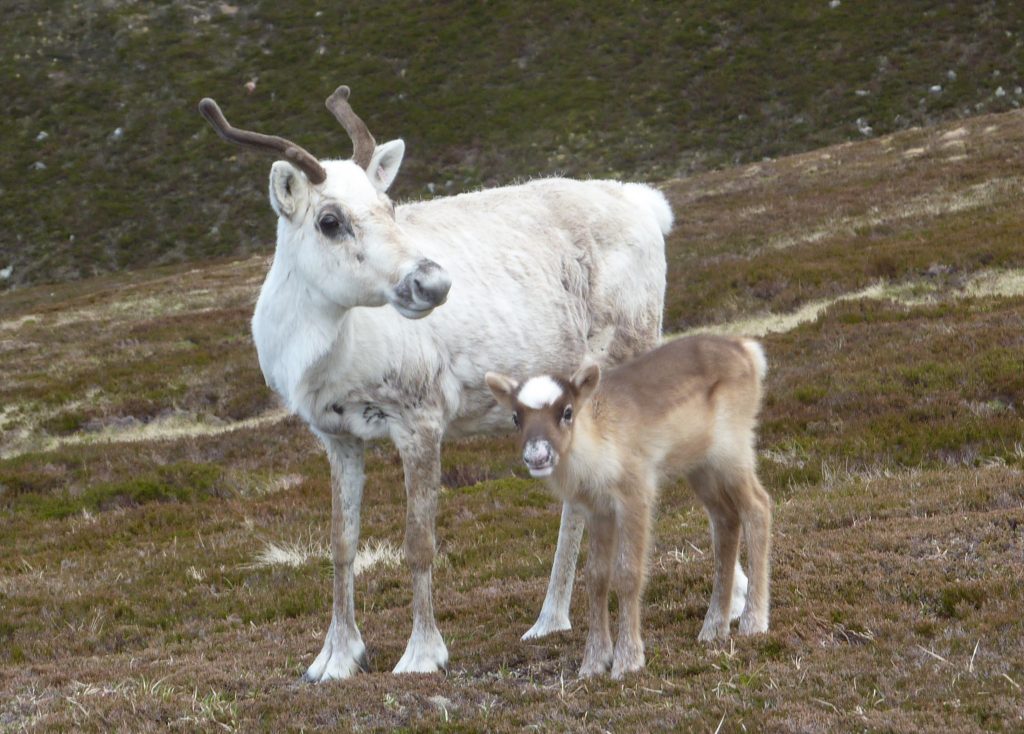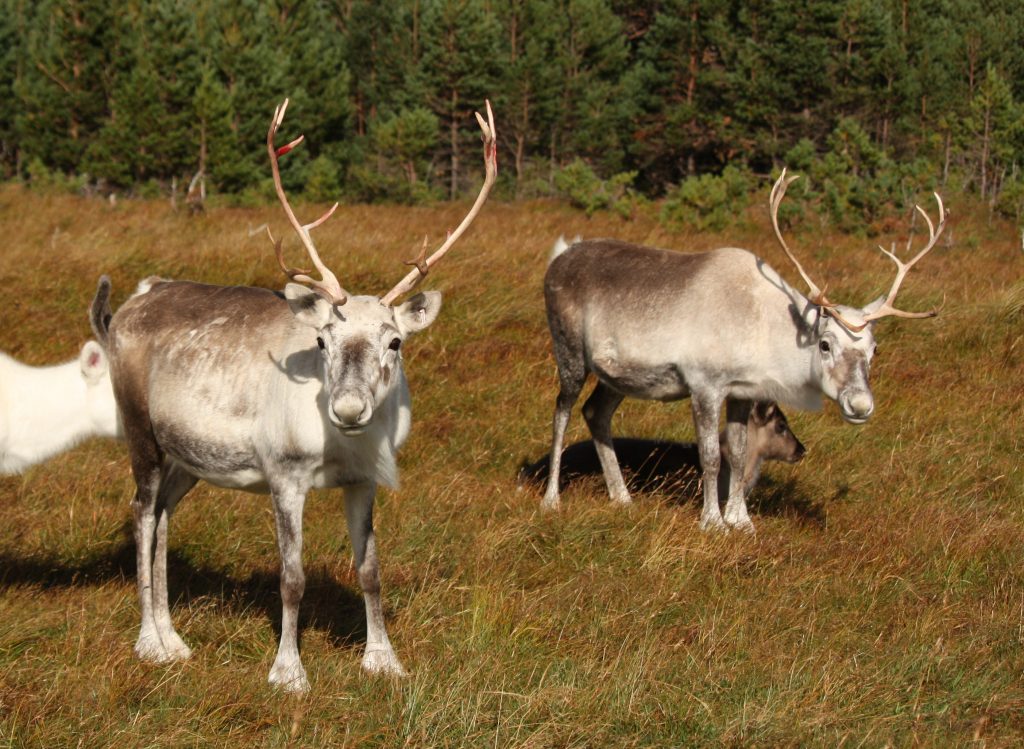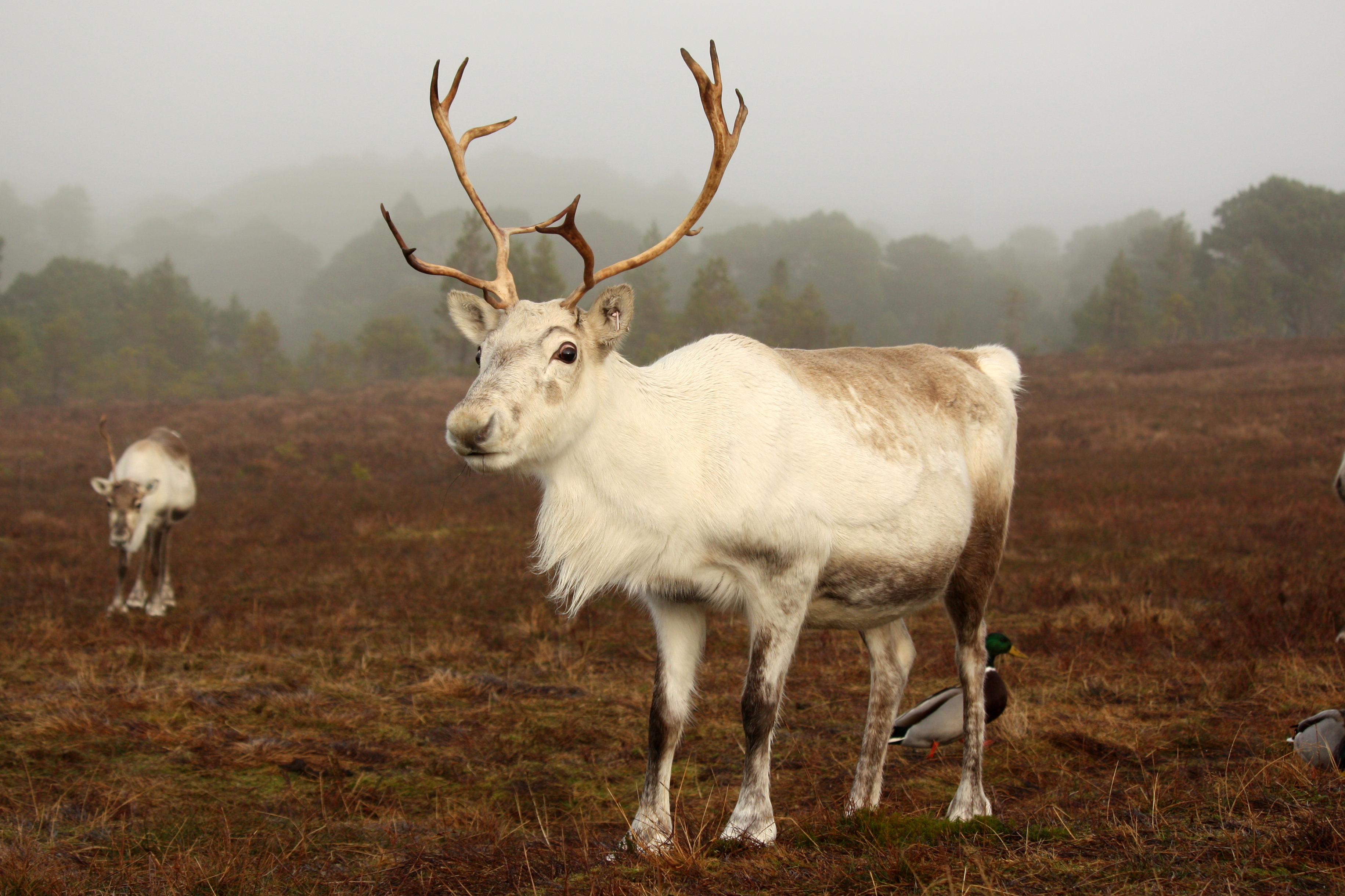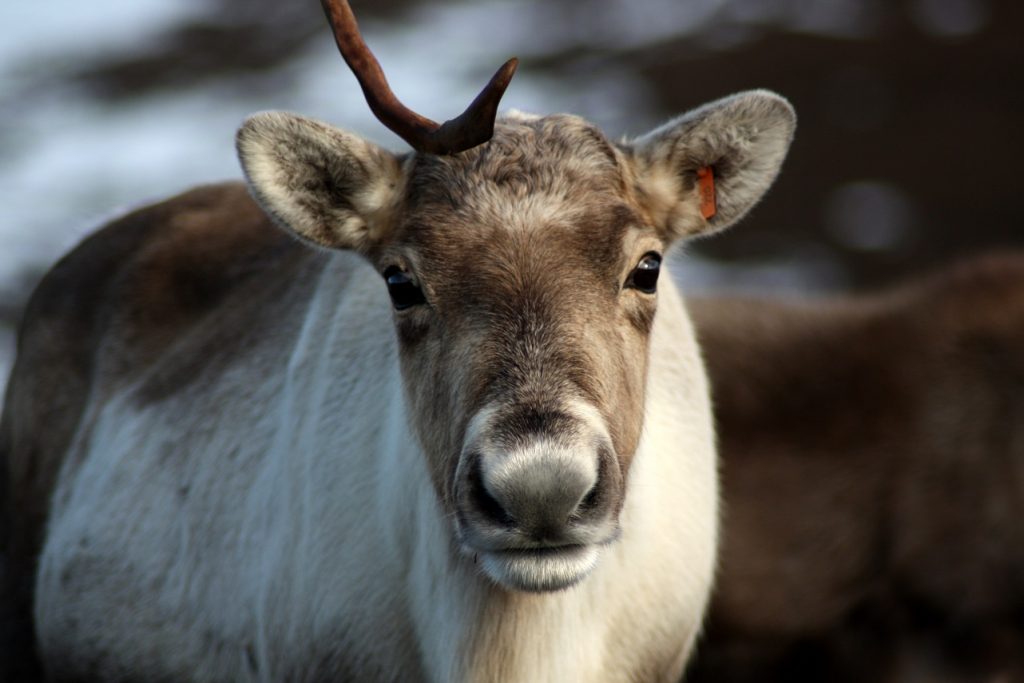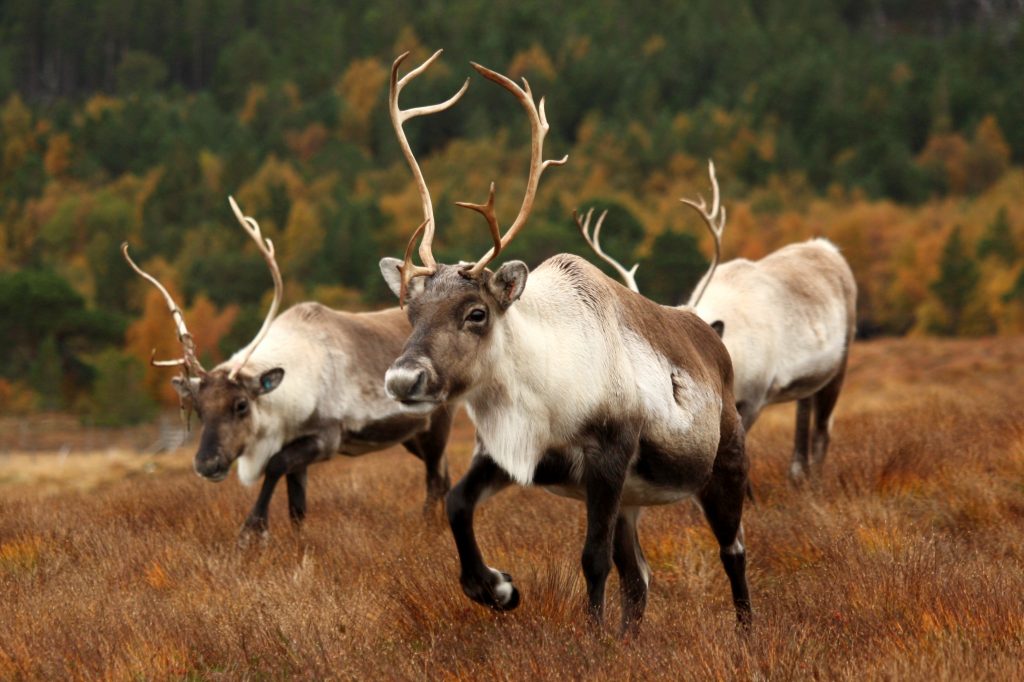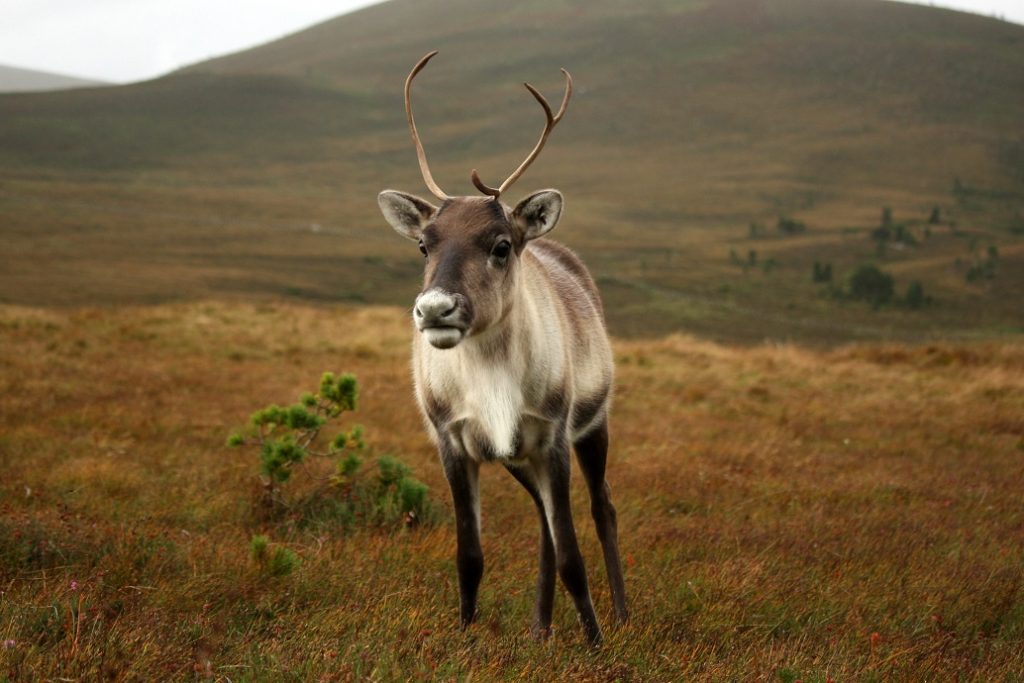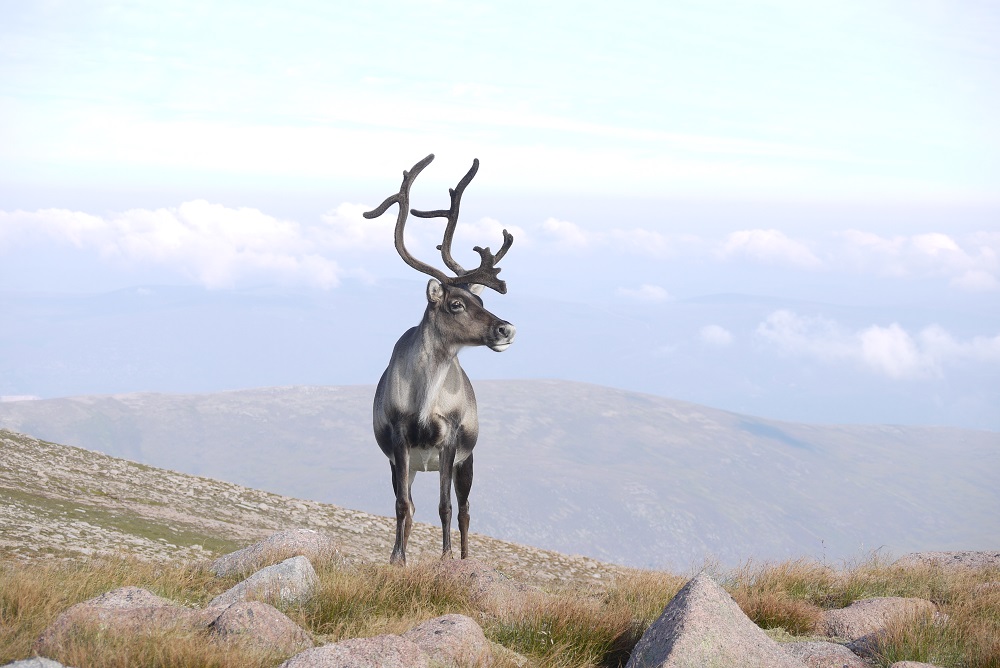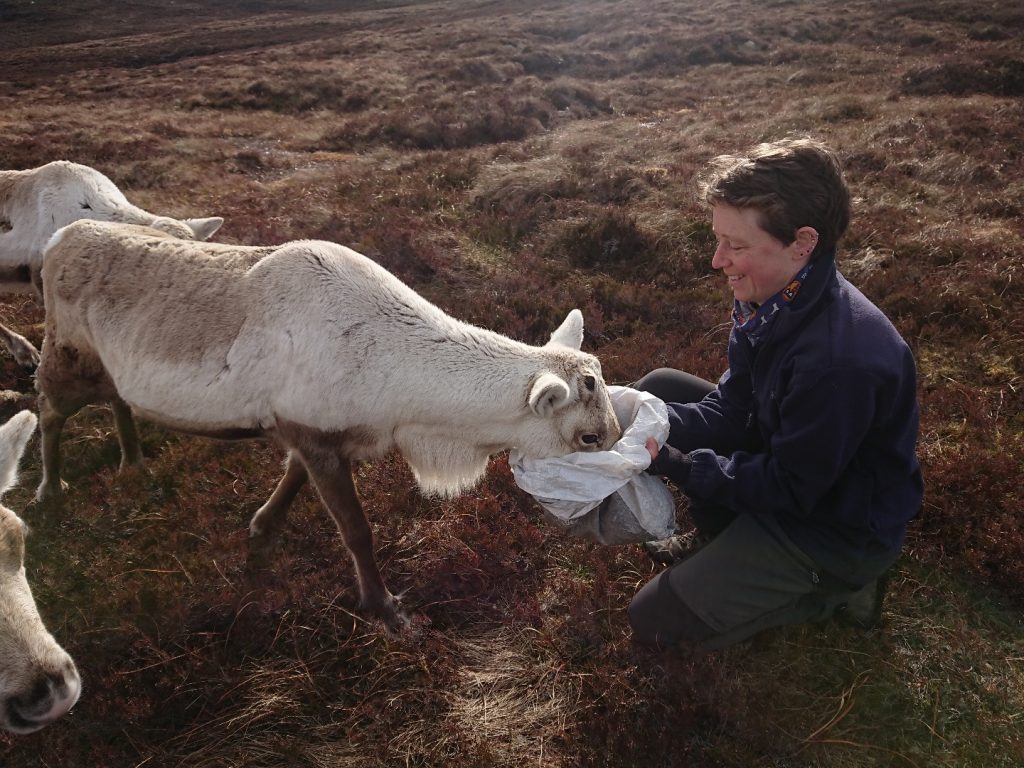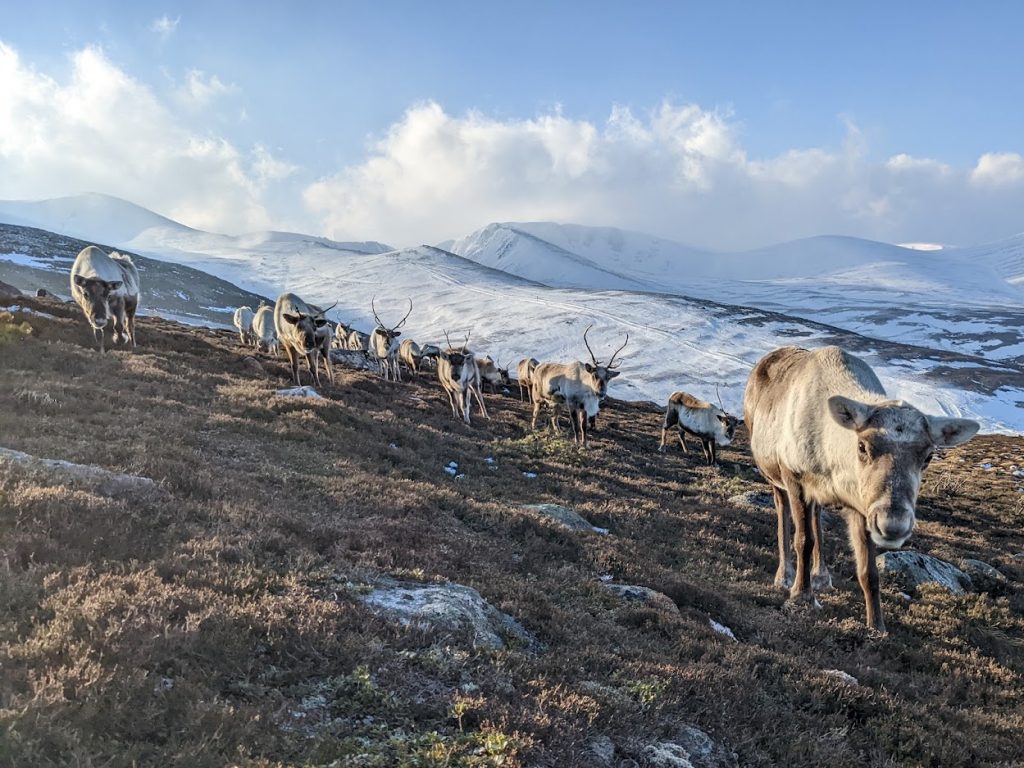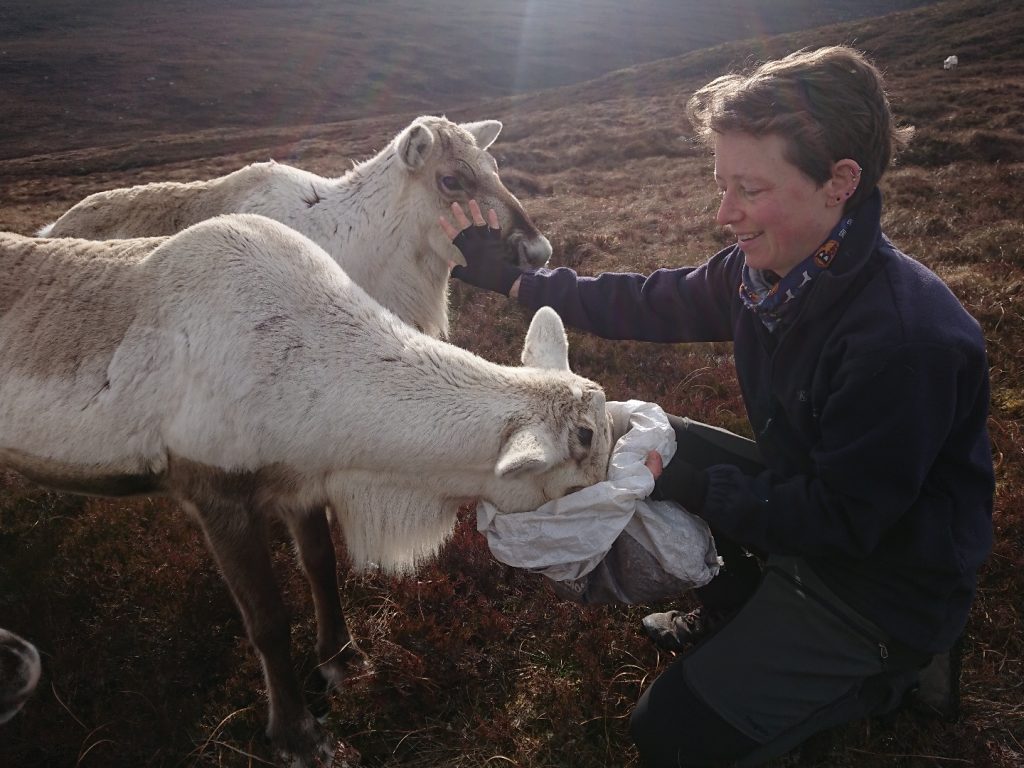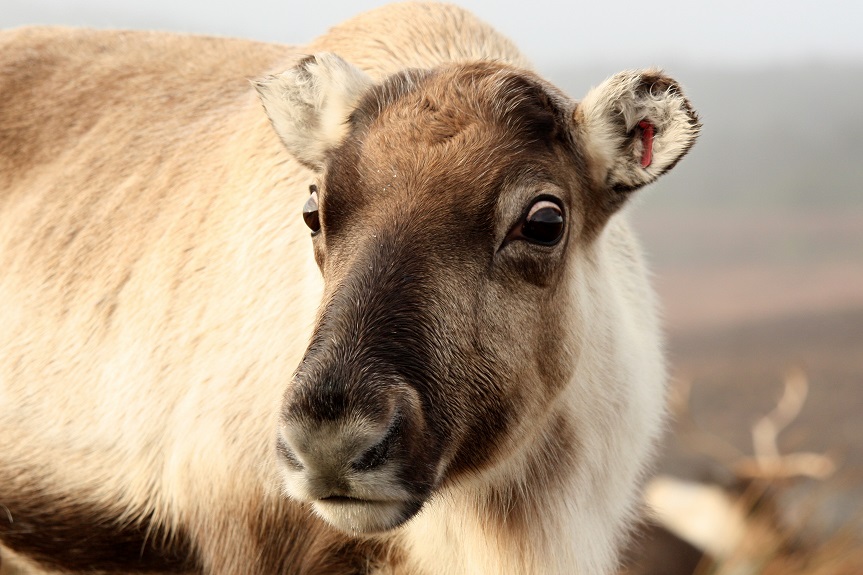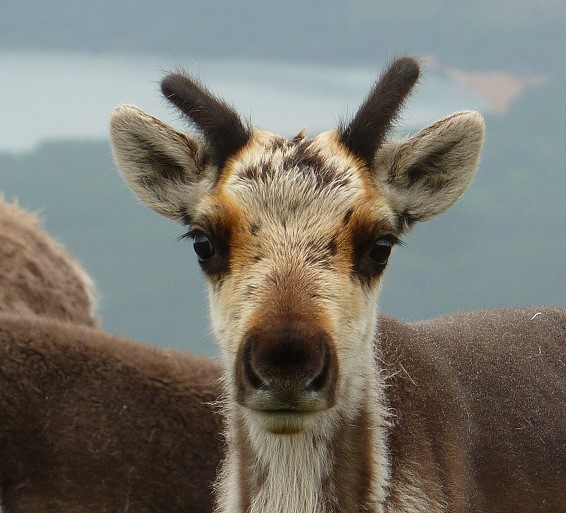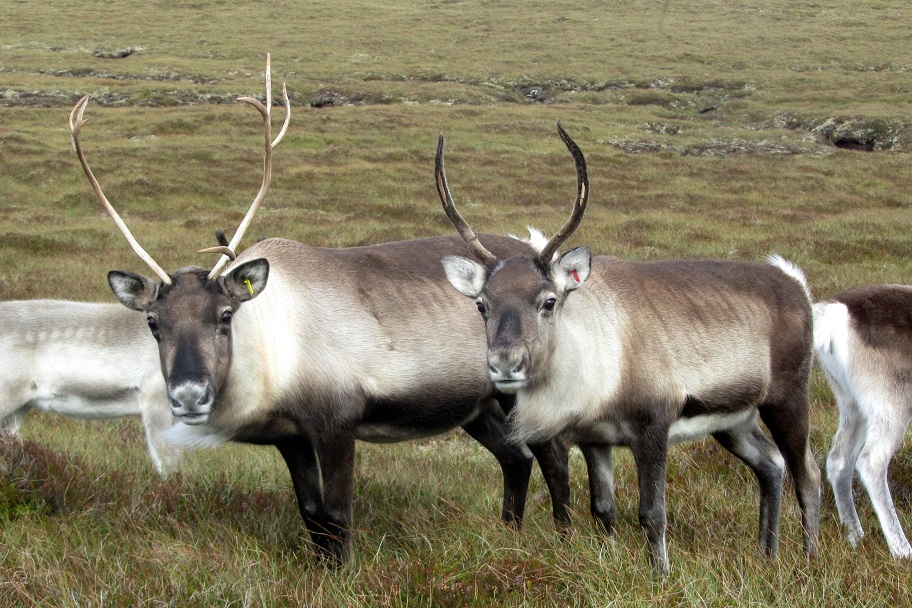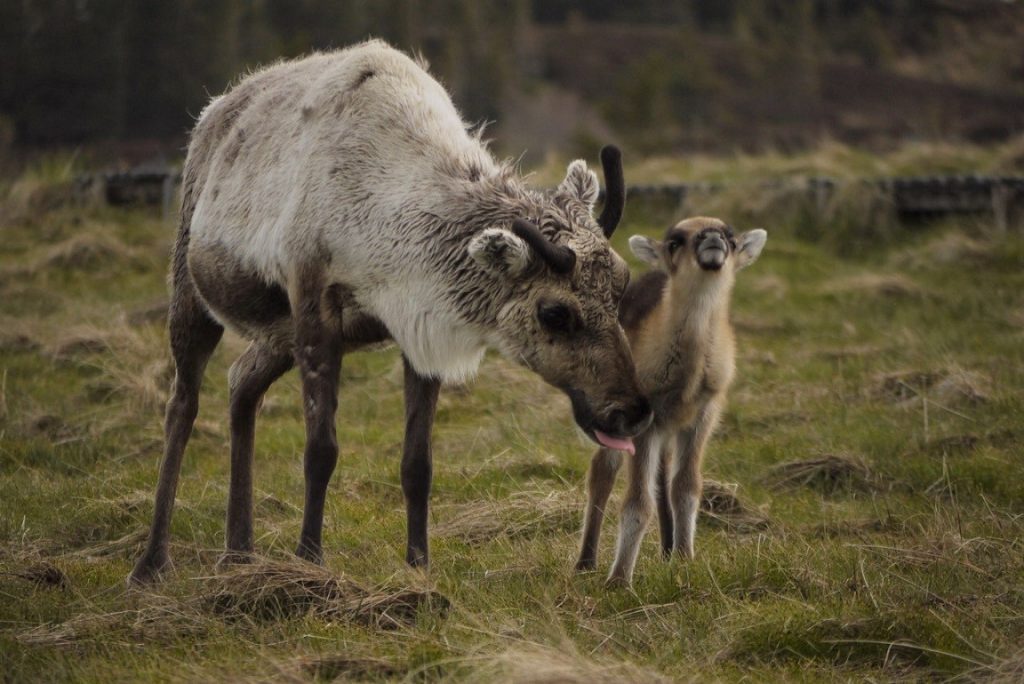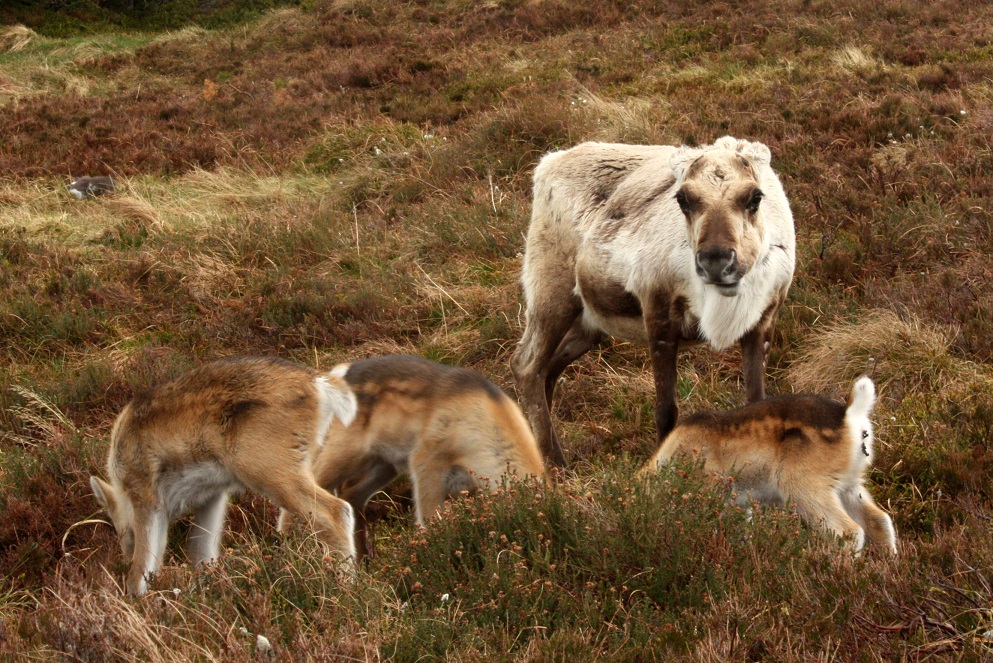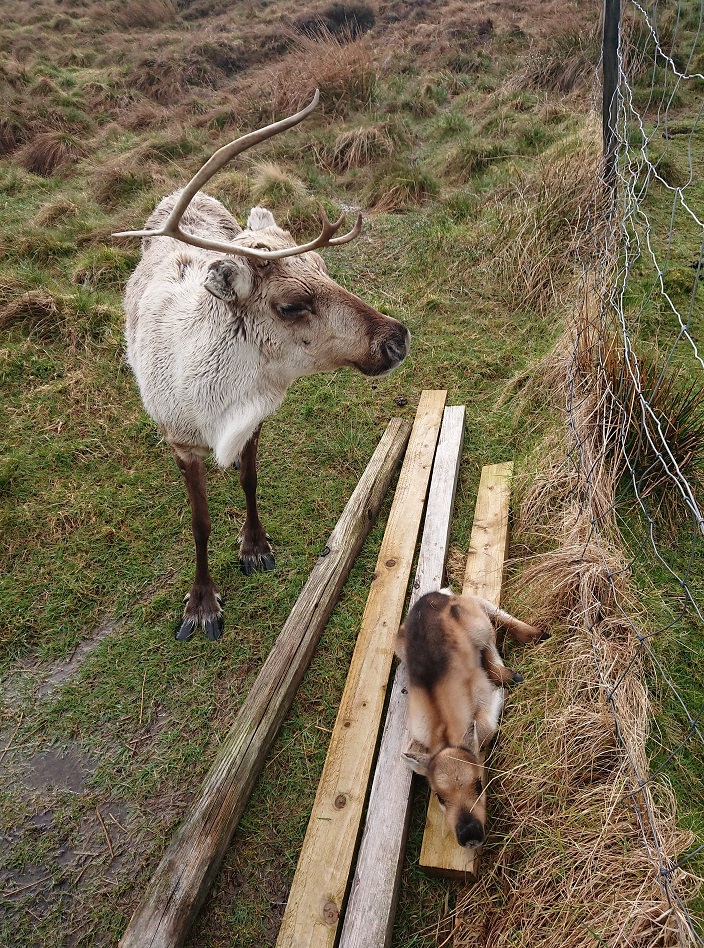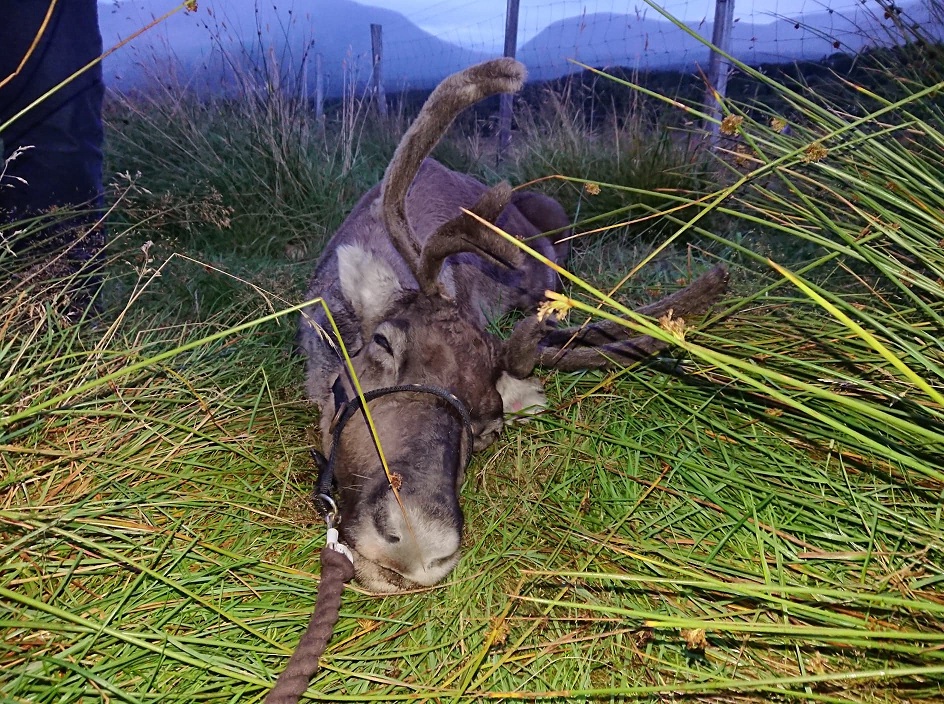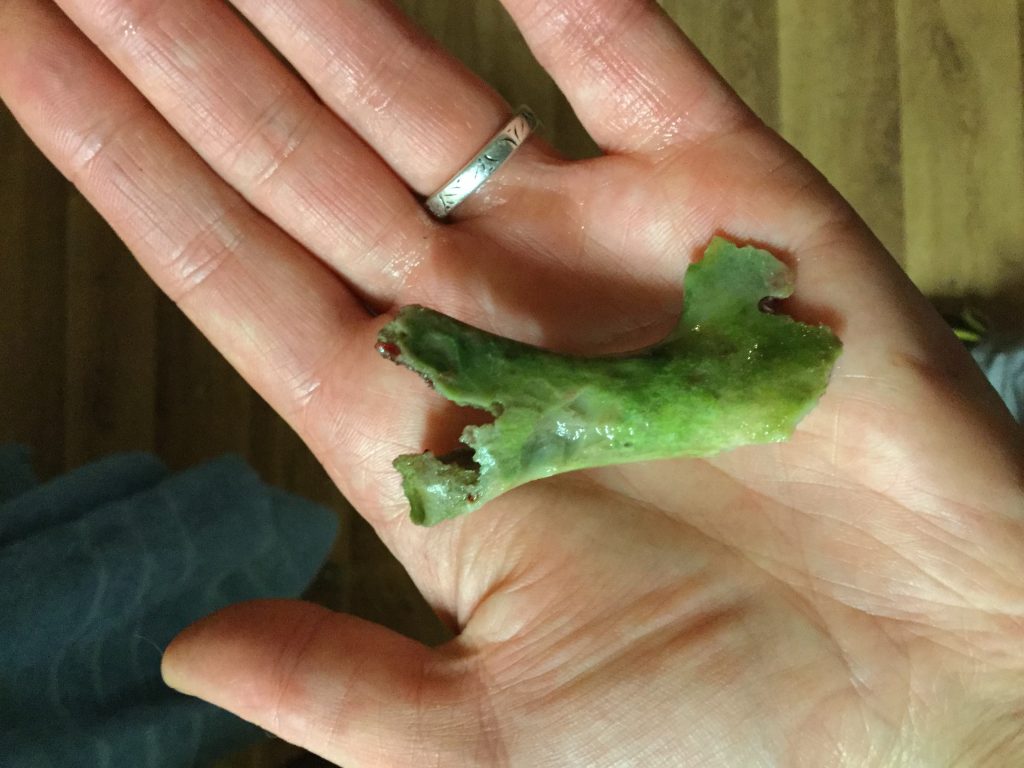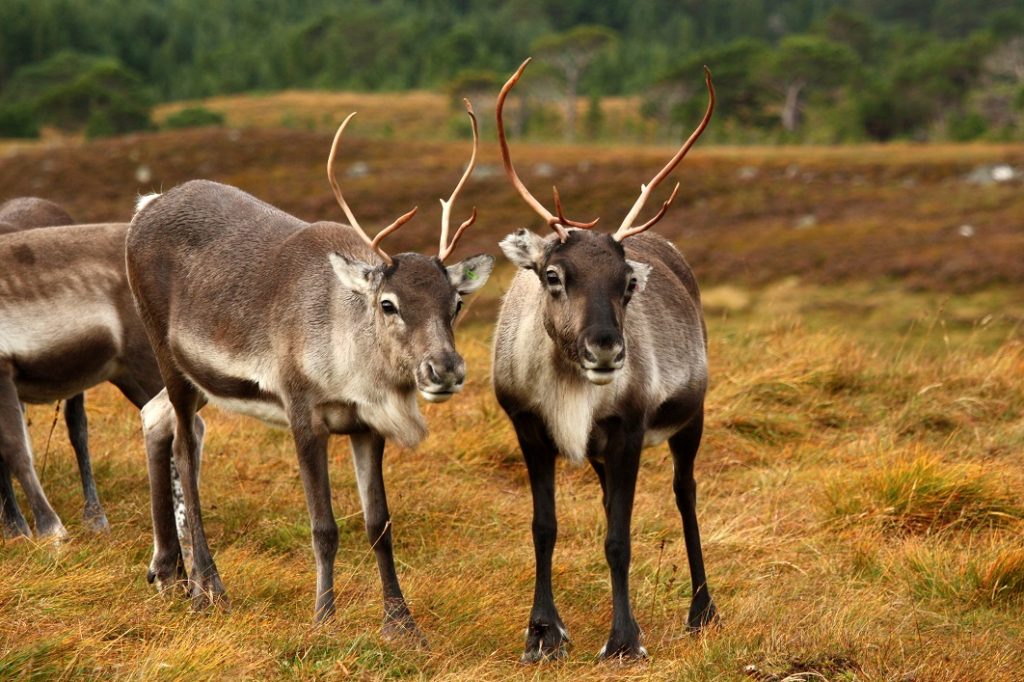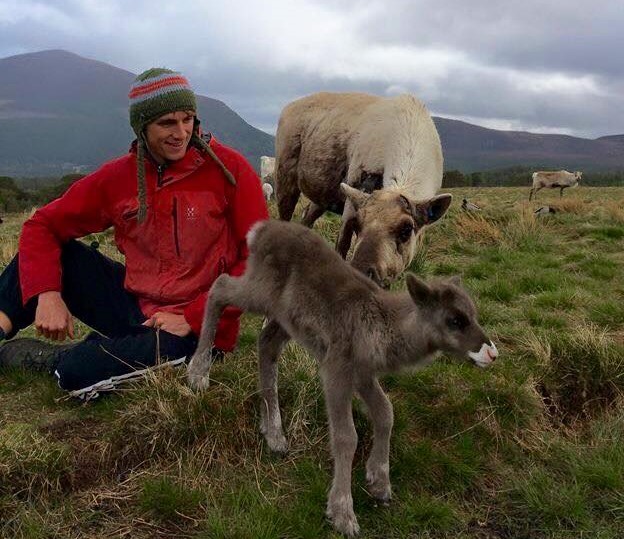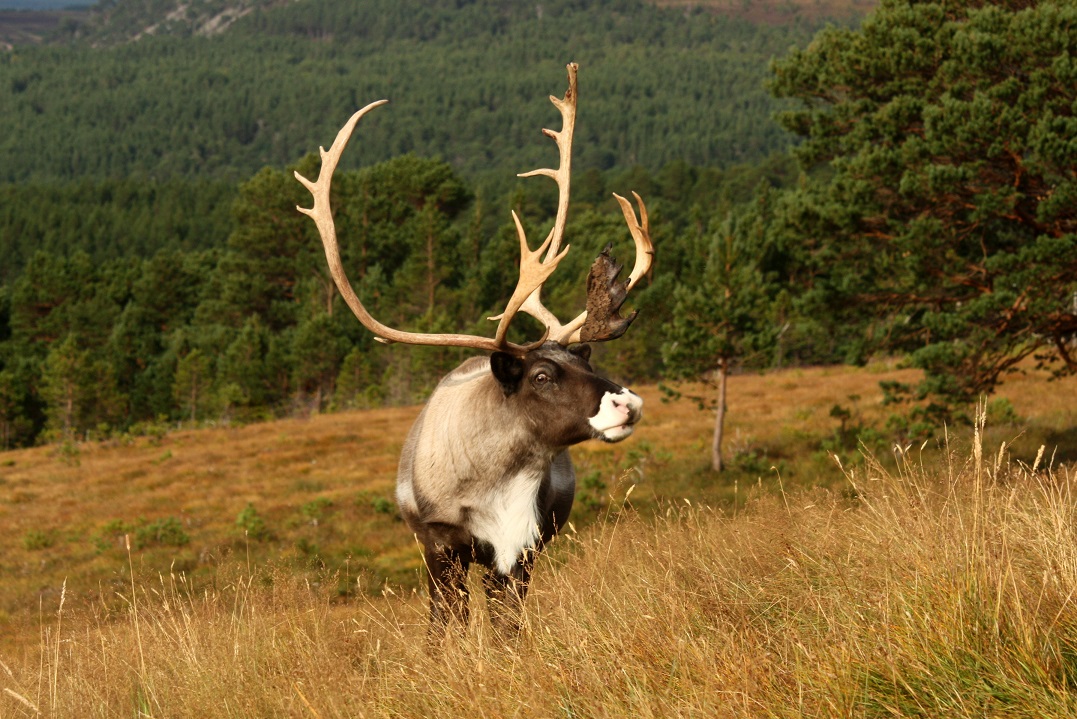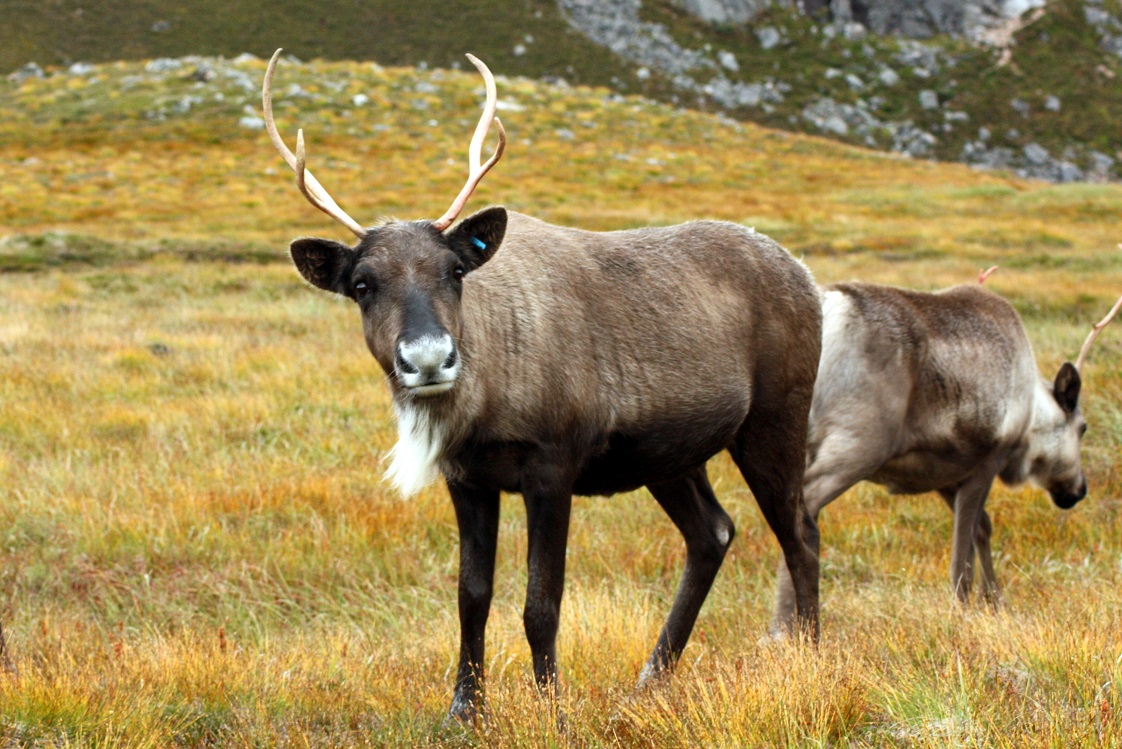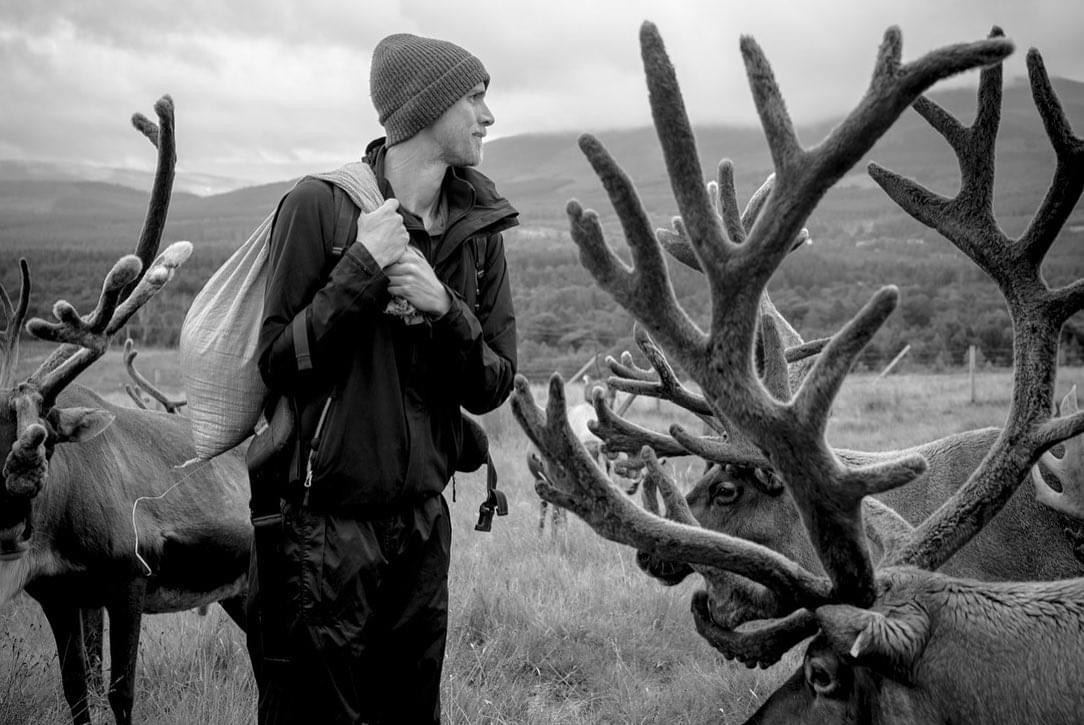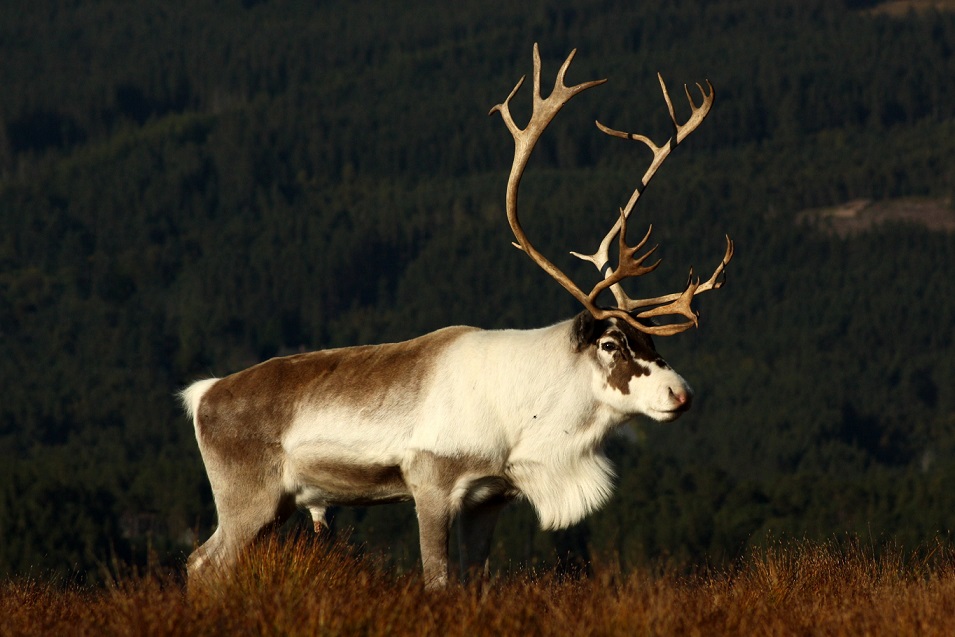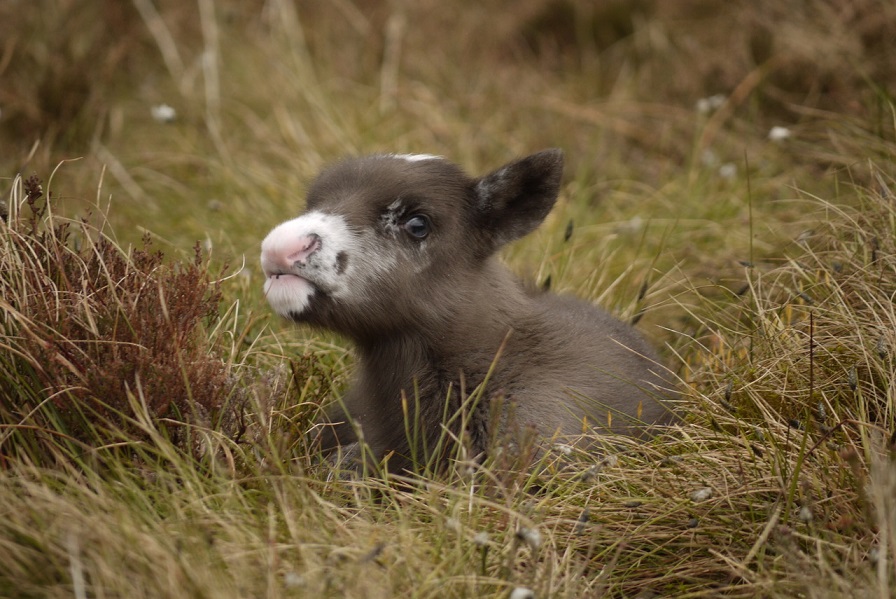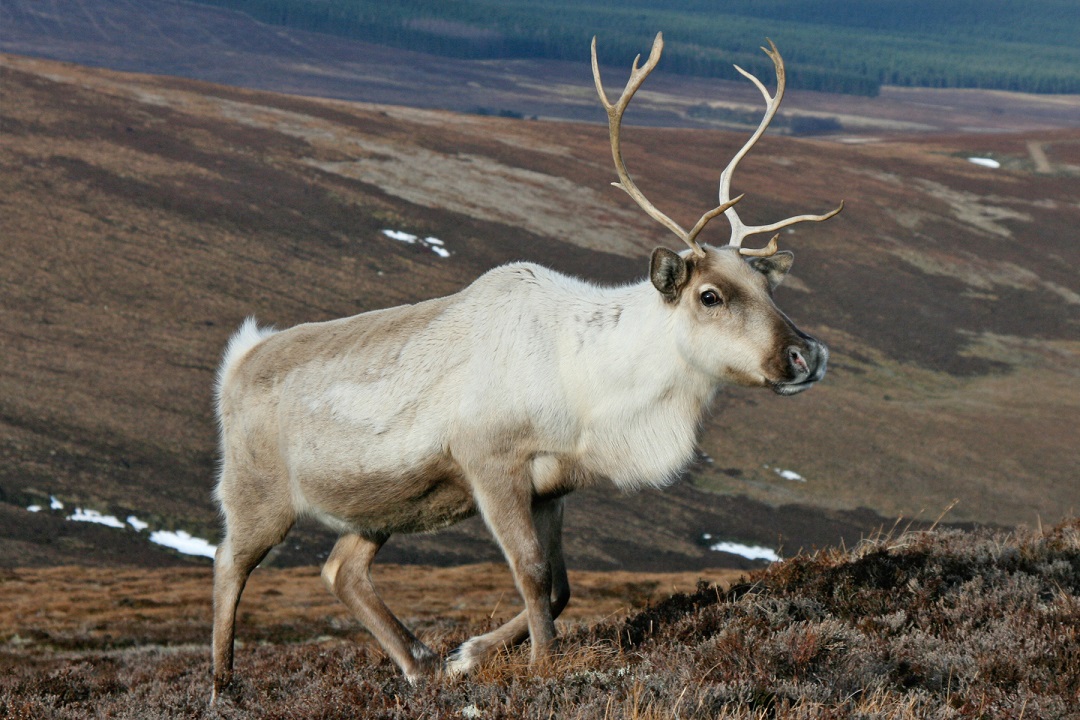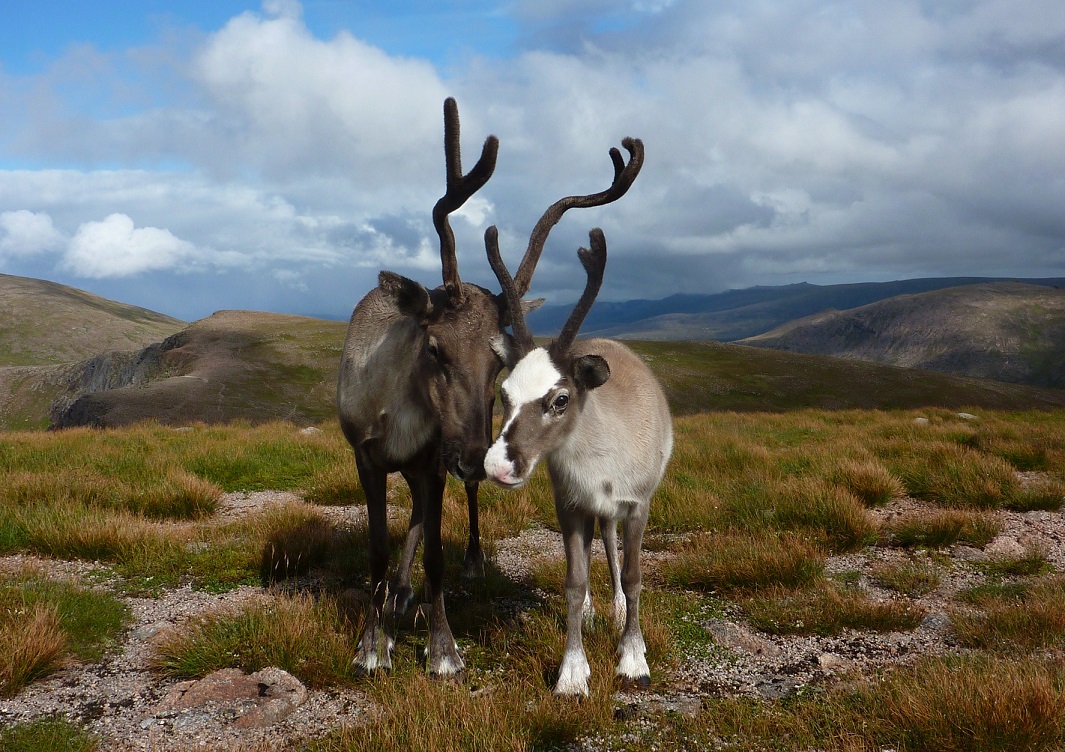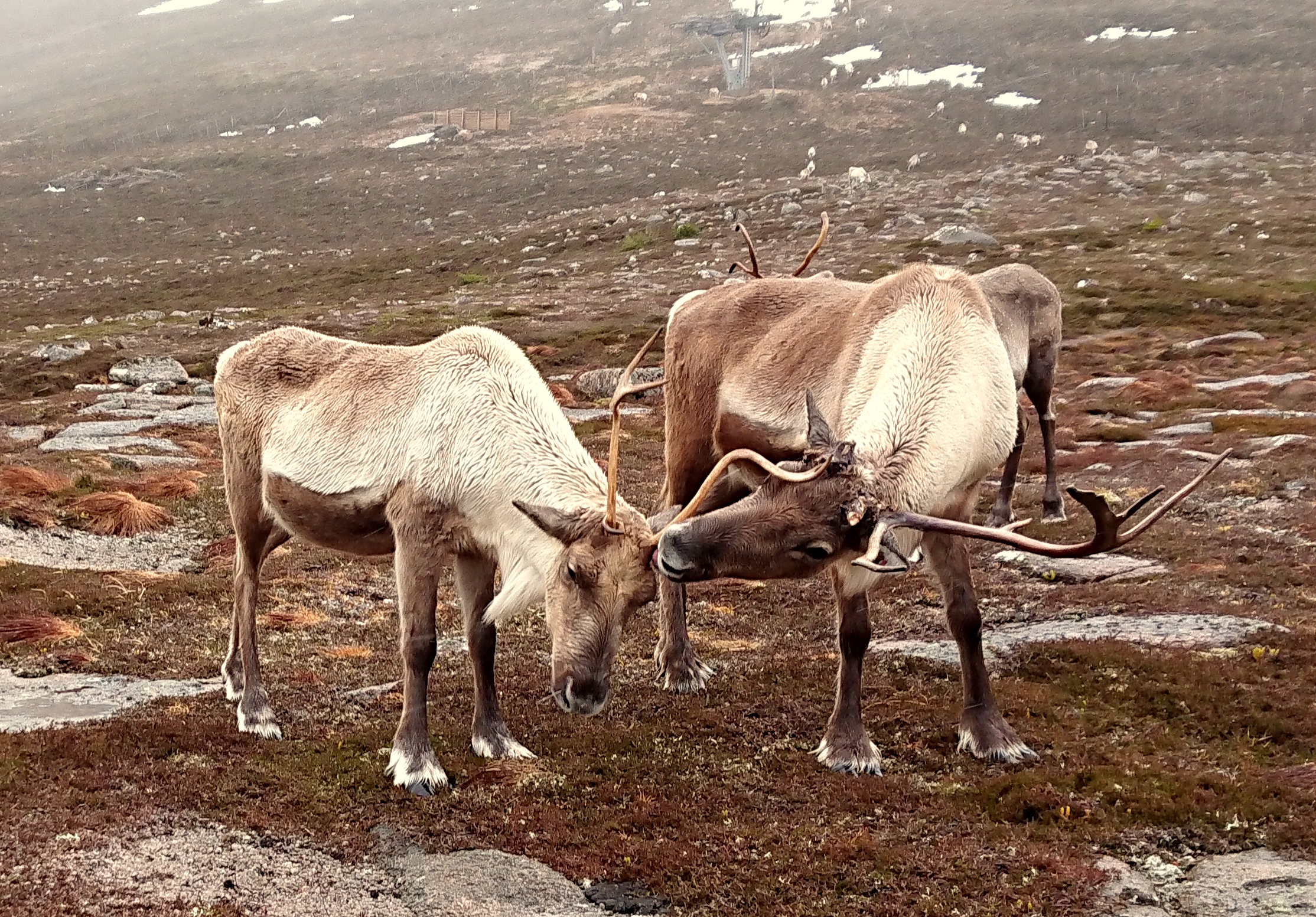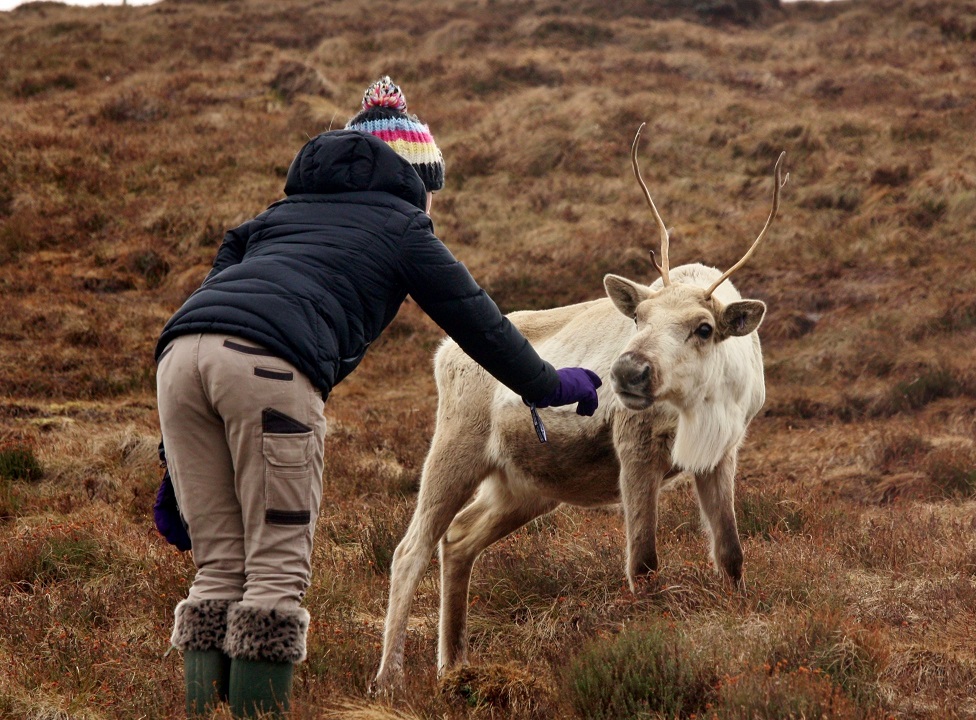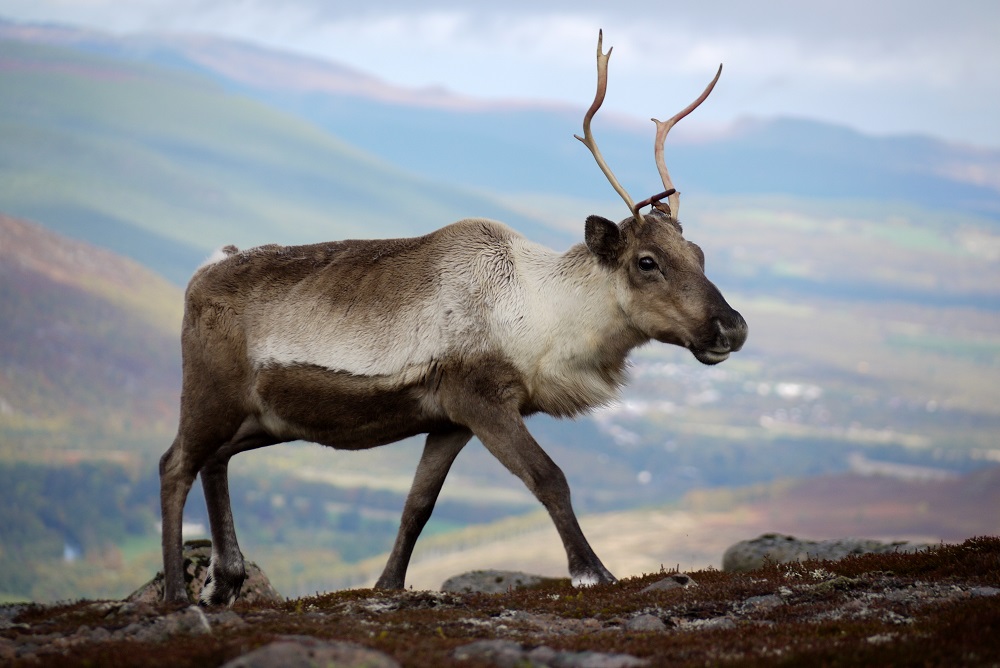My chosen reindeer to write about this time is Lute, who was already a middle-aged female when I first started as a reindeer herder, back in 2007. She died quite a few years back now so the younger staff here won’t remember her at all. But I do, and writing these blogs is not only a nice way to get something written down about a reindeer who may otherwise gradually fade from the mists of memory, but also an enjoyable excursion for me in to my own memories.
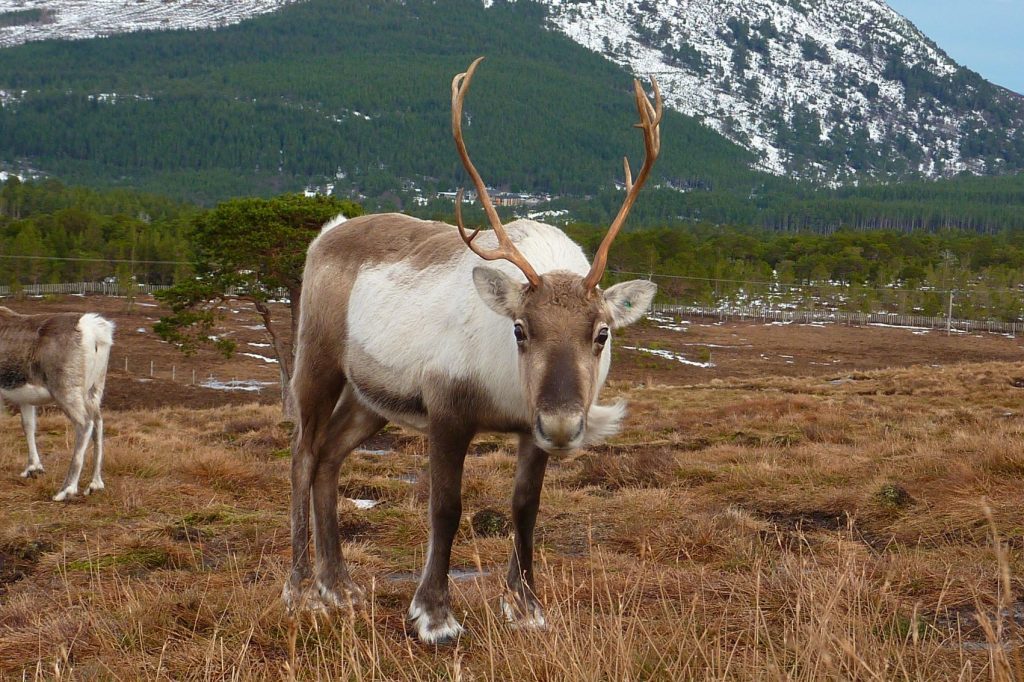
Lute was what we call ‘normal-coloured’, i.e. the standard brown colour that is most common amongst reindeer. But she stood out immediately in the herd and was therefore one of the very first reindeer I (and any other herders of a certain generation) learnt to tell apart from the others, as she walked strangely, crabbing along on a diagonal the whole time rather than walking straight. She must have injured her back at some point and damaged nerves permanently to cause this, but it wasn’t something that occurred in the hill enclosure where we might have been able to treat her, but rather out on the mountain free-range..
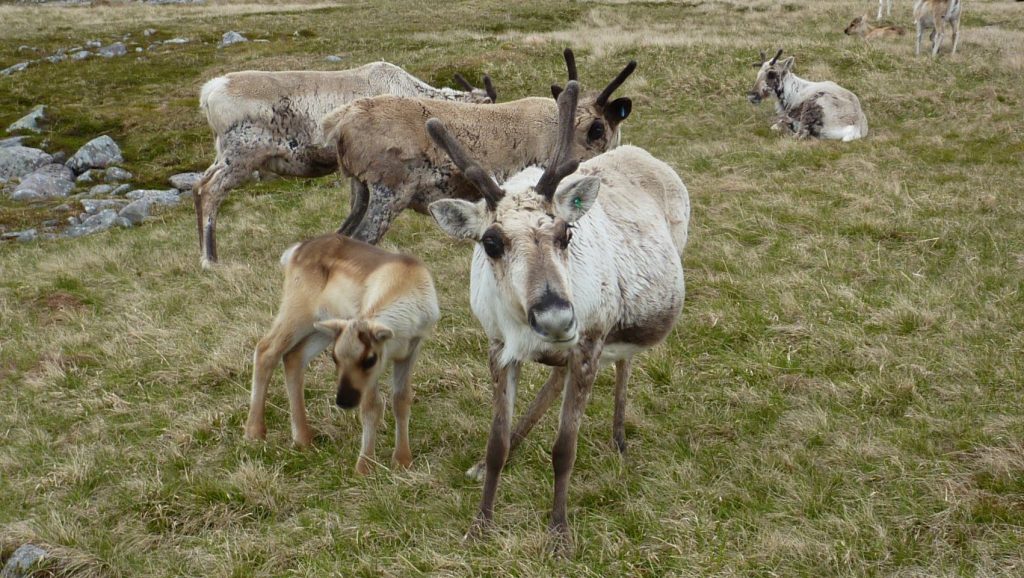
Bit of a nuisance for a reindeer, come to think of it, as they normally conserve energy by their hind feet tracking right into the hoofprints left by their forefeet, saving energy when walking in snow for example. Perhaps Lute always made sure to walk in the middle of the herd where her hind hooves could follow someone else’s tracks? Despite her ‘disability’, Lute never really seemed to have any issue keeping up with the herd, so it had just become a quirk specific to her by the time I arrived on the scene. It did mean you could pick her out amongst the herd a couple of miles away through binoculars sometimes, making you look good in front of unsuspecting visitors/volunteers/new staff members when you said knowingly about the dots running down the hillside ‘ah yes, there’s Lute’.
Lute also stood out that first winter for me as she’d grown excellent, enormous antlers for a female reindeer. There must have been something in the water that year, as many of the females had incredible antlers, some despite also having a calf at foot (which normally saps their energy enough to reduce their antler growth). Most years, in the second half of her life anyway, she tended towards growing rather twisted, oddly-shaped antlers. Matching her twisted, odd gait!
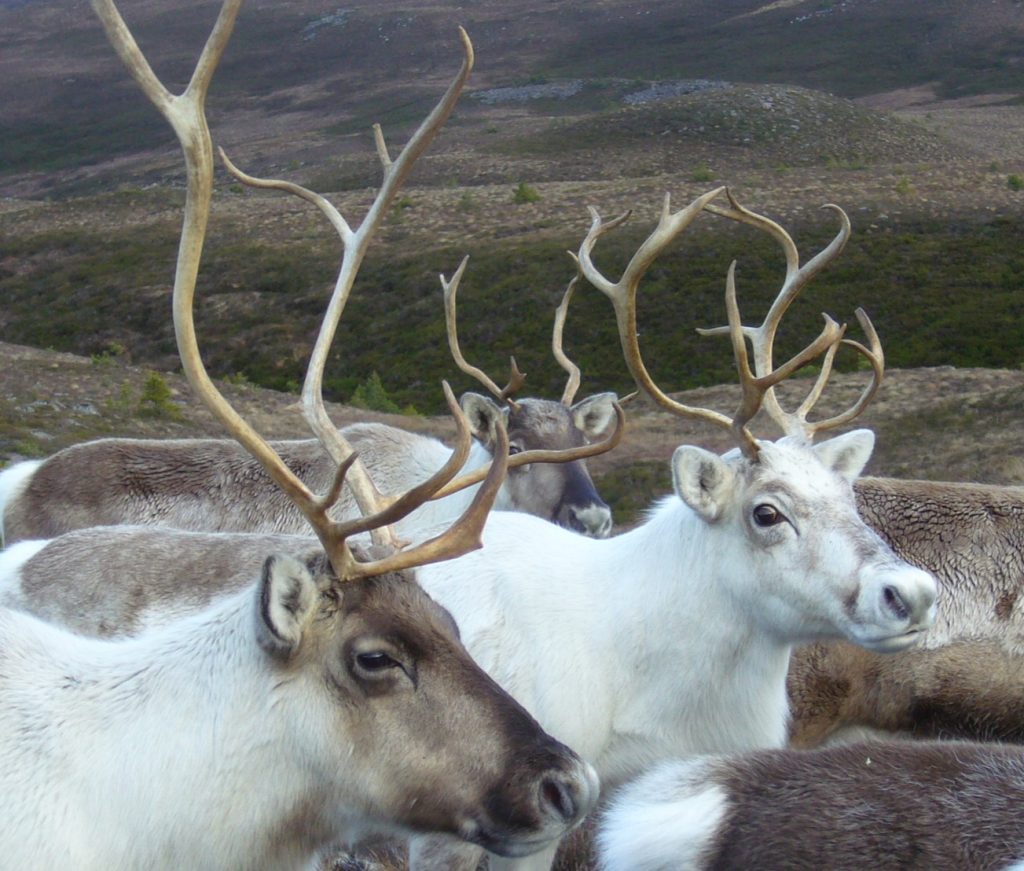
Good genetics ran in the family, it seems. Lute was one of 11 calves for her mum Ferrari, back in the days when we would let reindeer breed every year. Nowadays we tend to give them a year off from time to time. But Ferrari popped out calf after calf no bother, with Lute being the eighth. Lute herself went on to be a very productive cow too, also with 11 calves to her name, although not all of them survived to adulthood. When I started she had Bean at foot, and then in 2010 her calf Lace was the first newborn reindeer I ever saw. Lace is still with us today, now nearly 14, and has become a real leader amongst the herd. By this I actually mean ‘dominant and bossy’. She’s a much bolder character than her mum ever was – I don’t really remember Lute being anything other than gentle and mild, a real sweetheart.
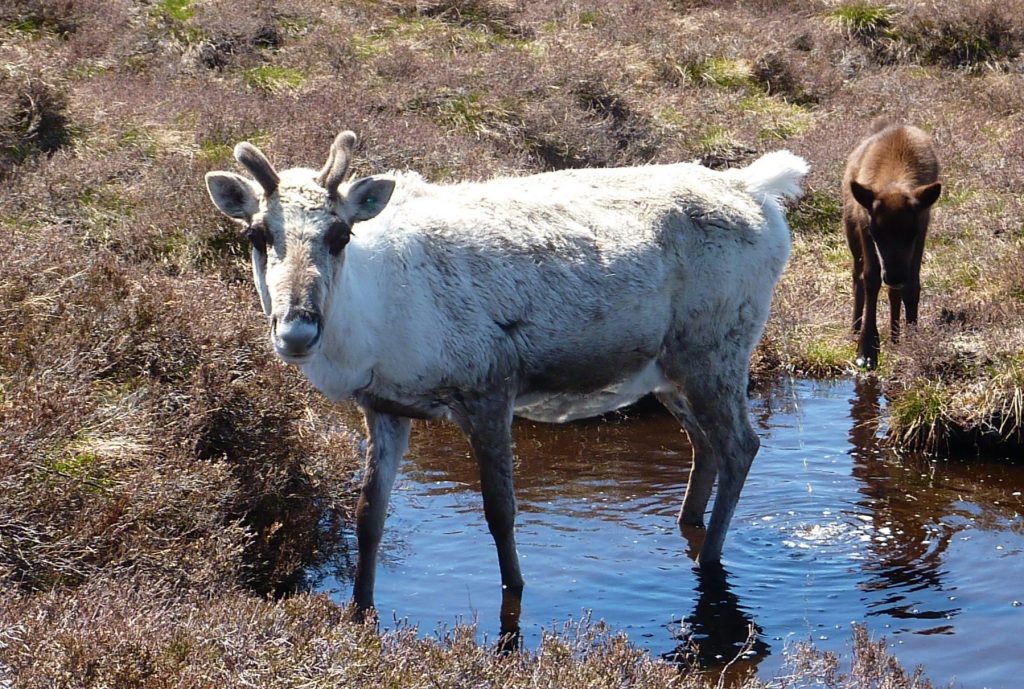
Lute bred some relatively shy offspring too, in particular Fada. But characteristics seem to skip generations sometimes, as Fada bred lovely calves usually, the standout being Hopscotch. Hopscotch is still with us today and is now the matriarch of a dynasty of reindeer, including Busby, Pip, Tub and Juniper among others. Quite a legacy for Lute’s family line!
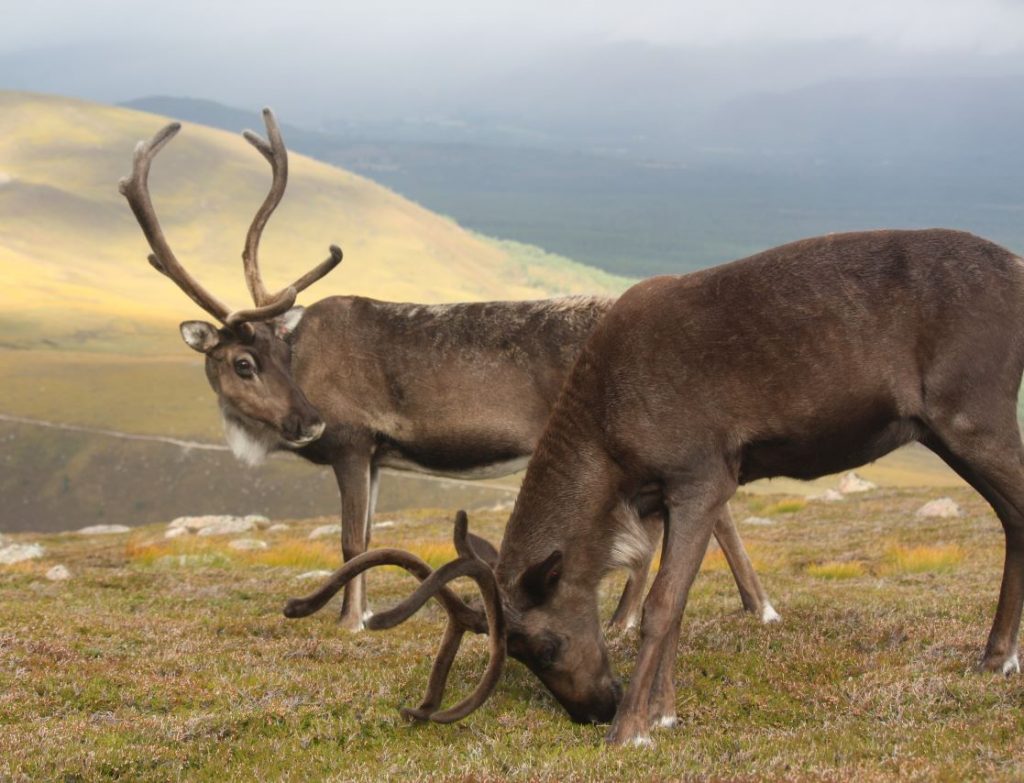
Born in 2000, Lute (who was named in the ‘musical’ theme), lived to a good age, passing away out on the mountains in the autumn or early winter of 2013. Daughter Lace is a little older than that now herself, and another daughter, Wapiti, got to around 15 years old, so there are some good long-living genes running in the family still!
Hen

